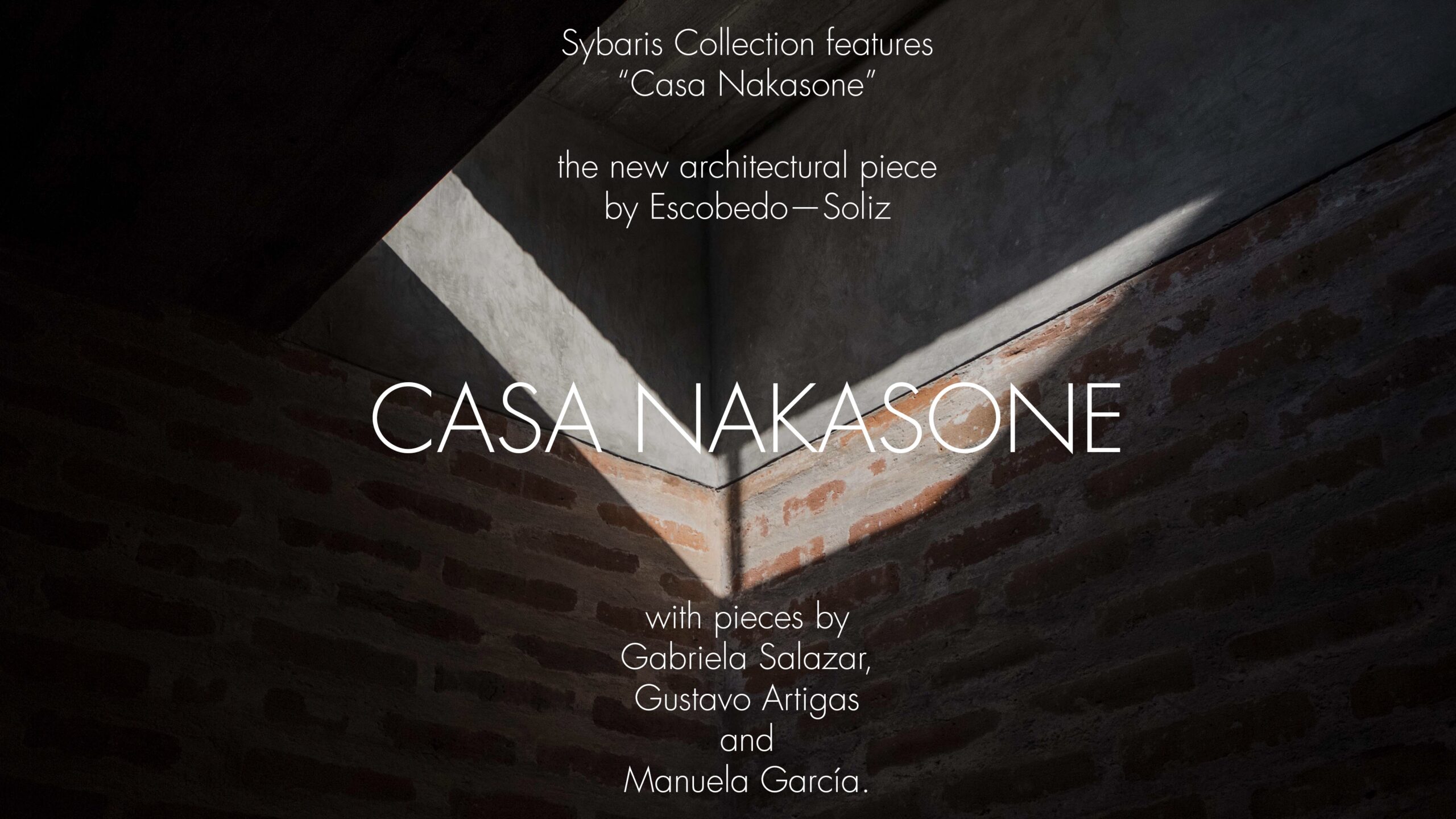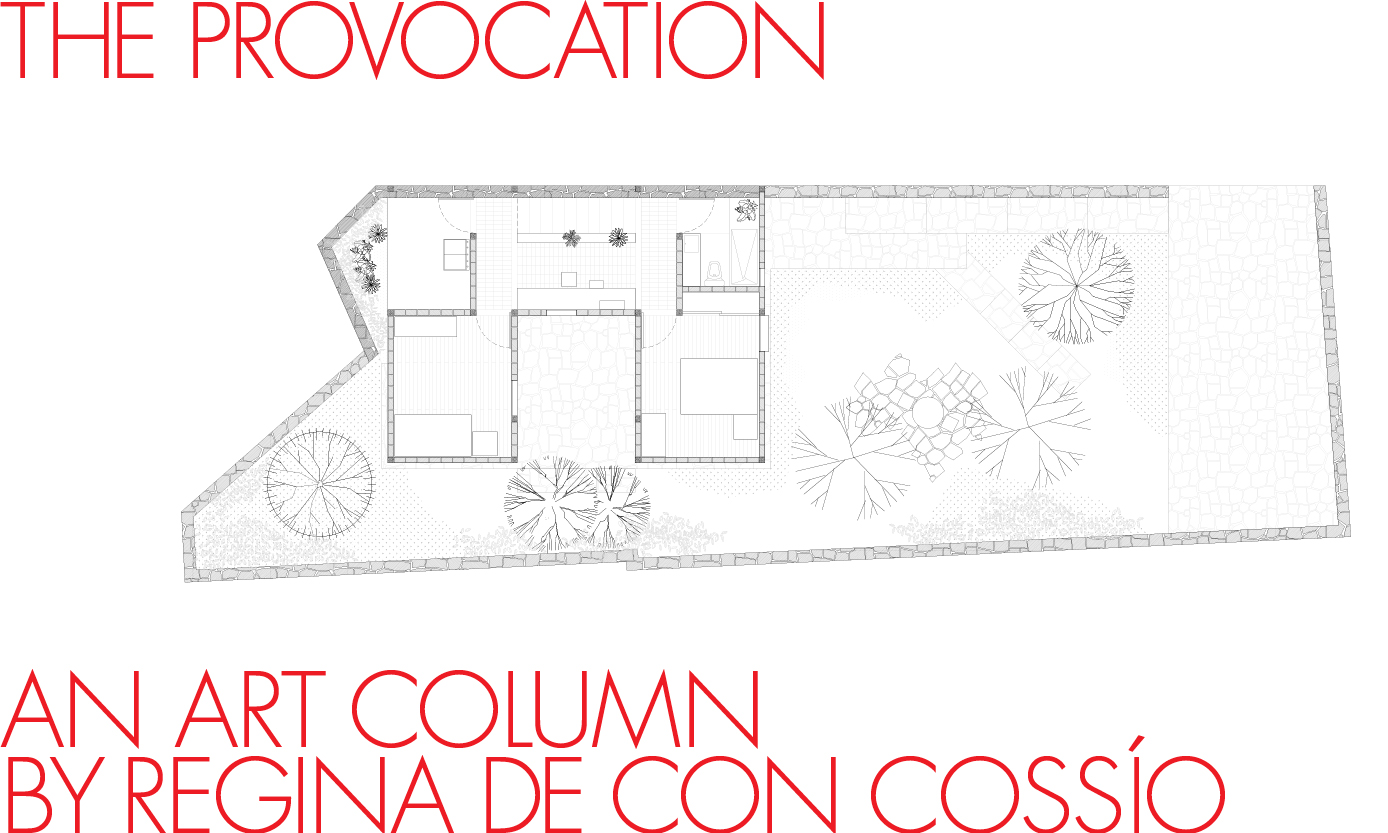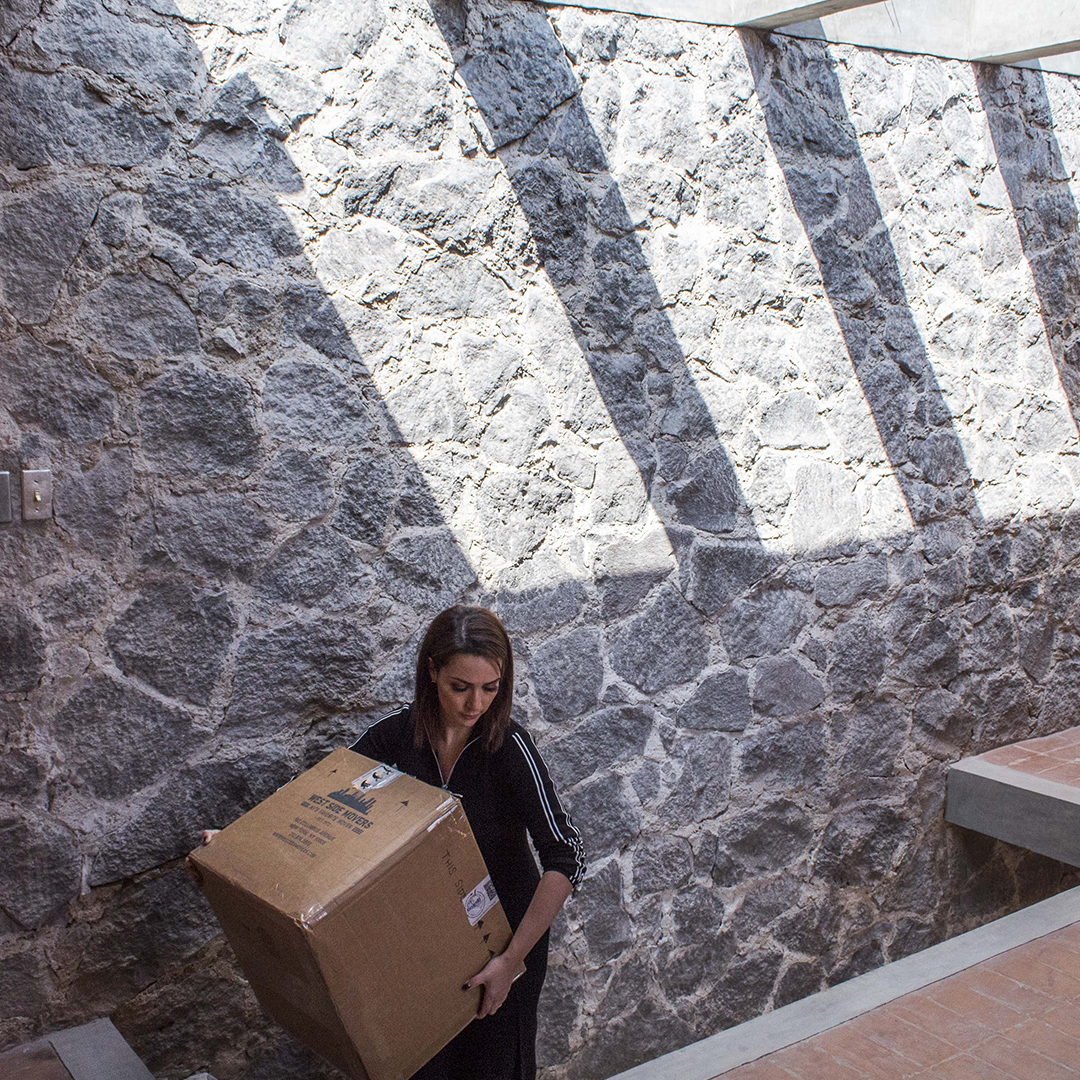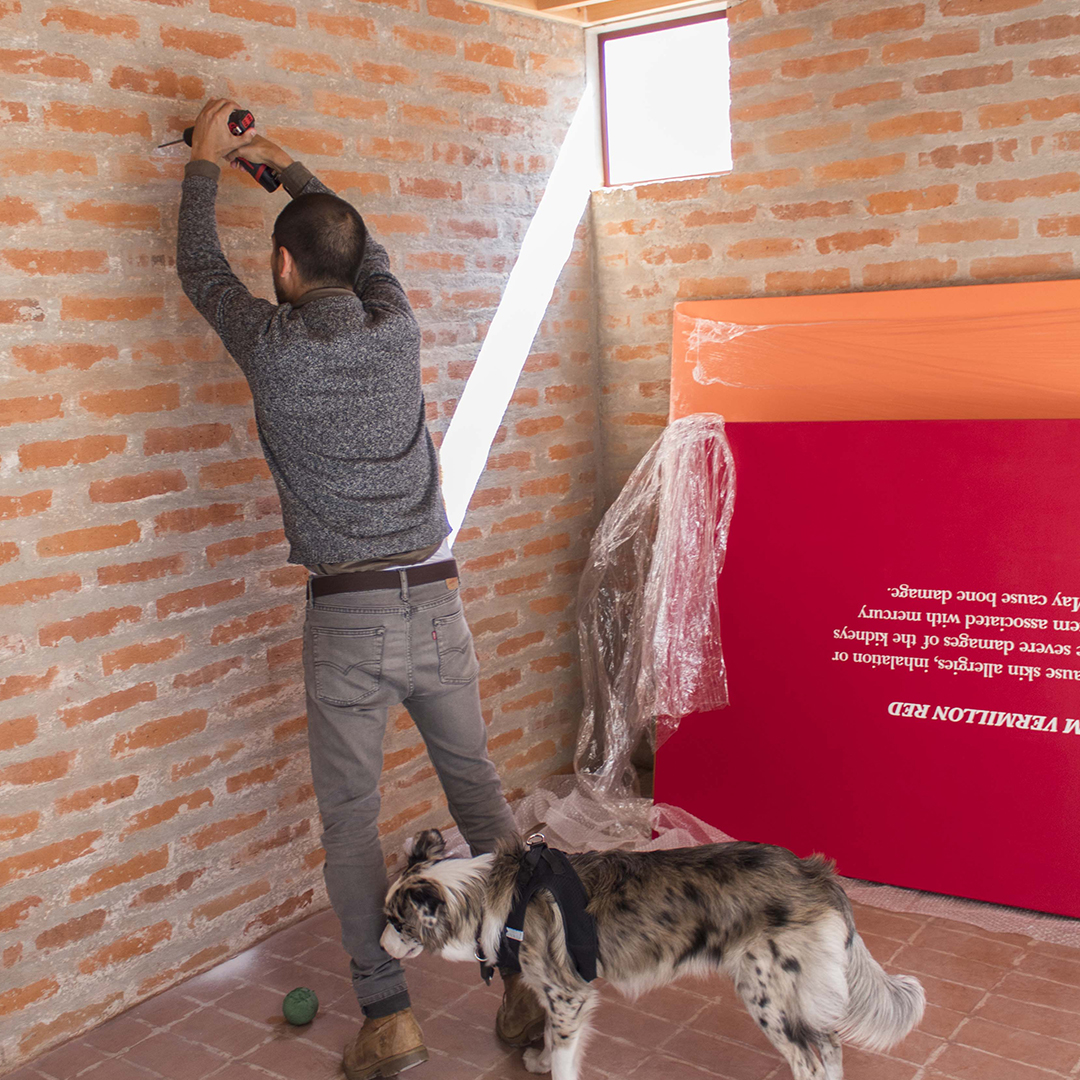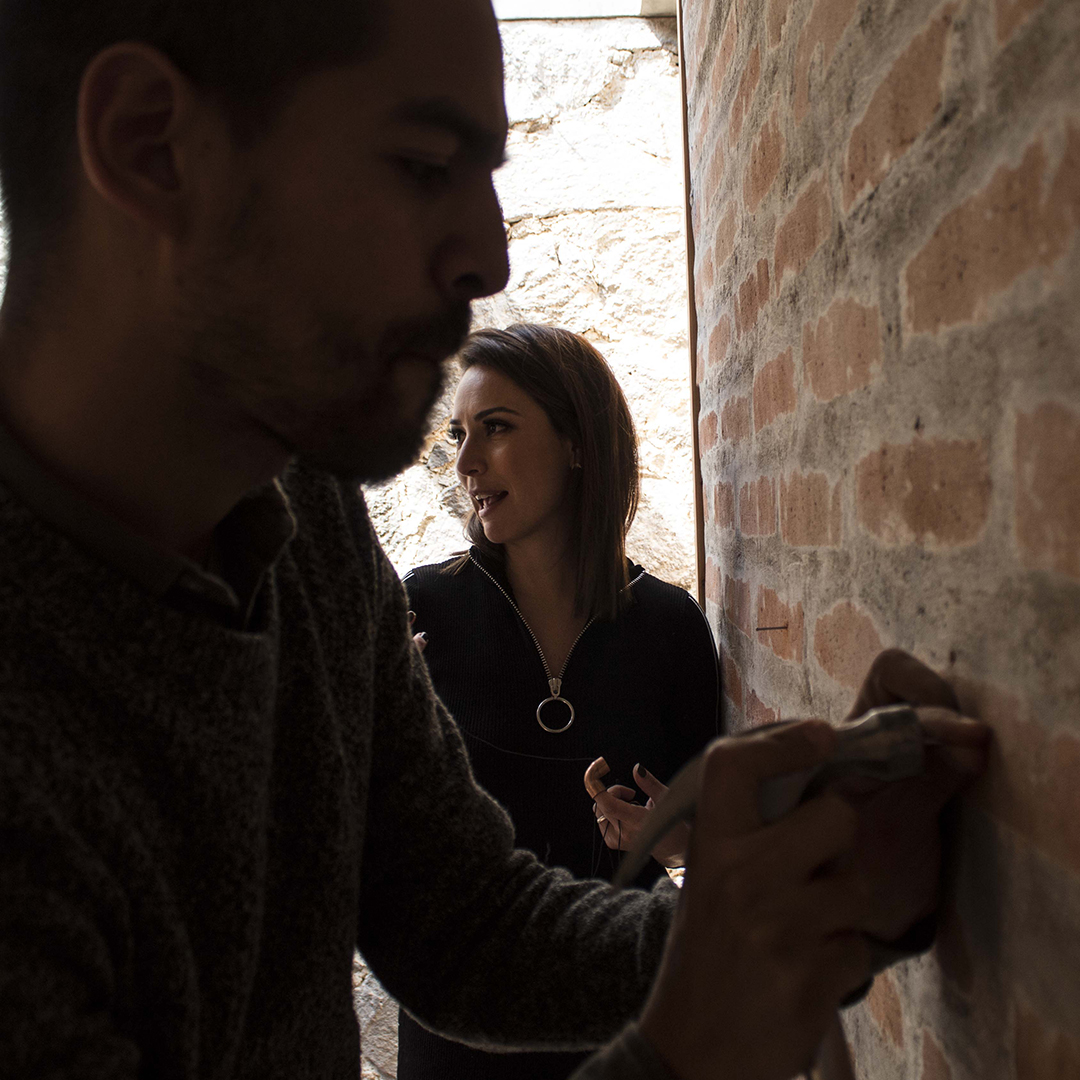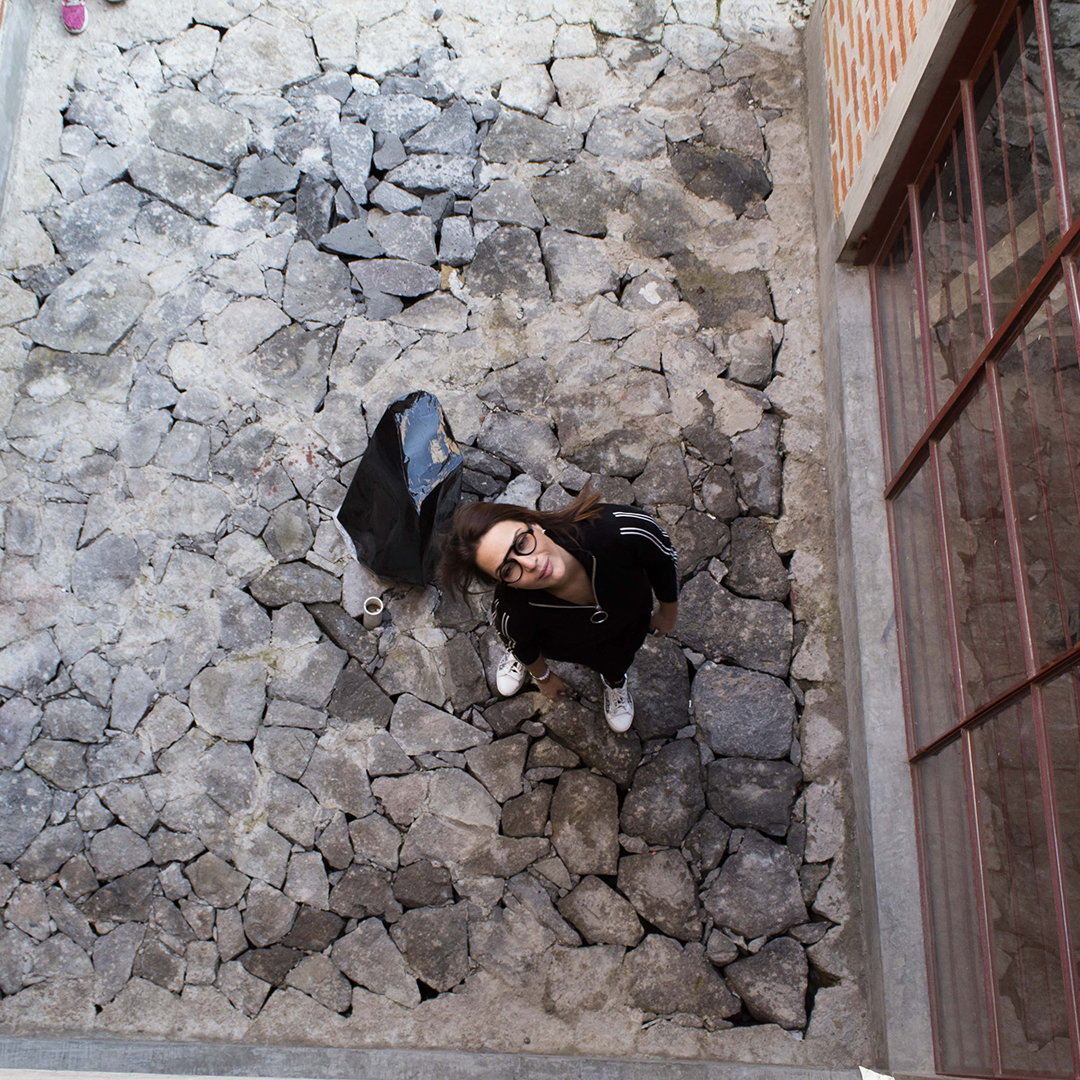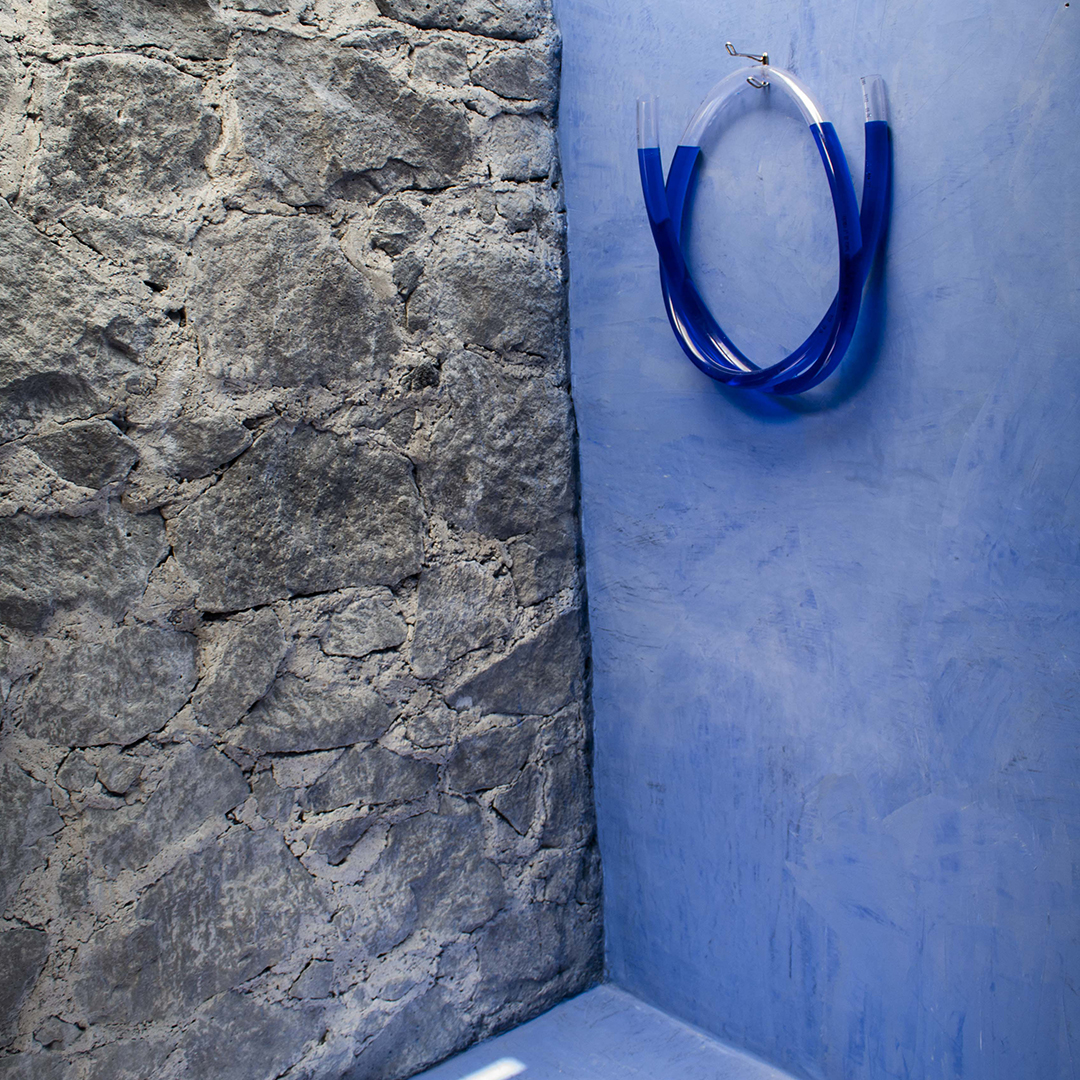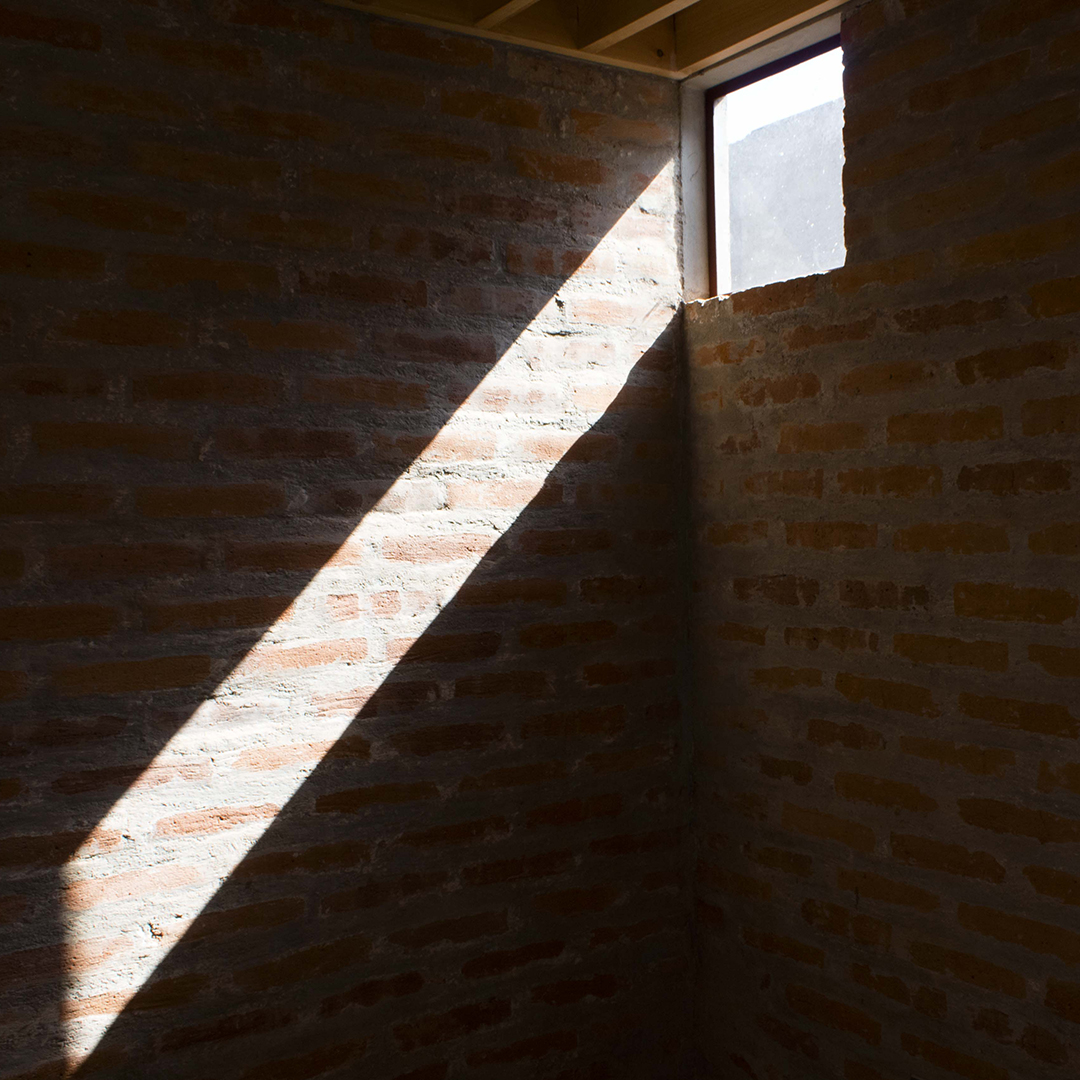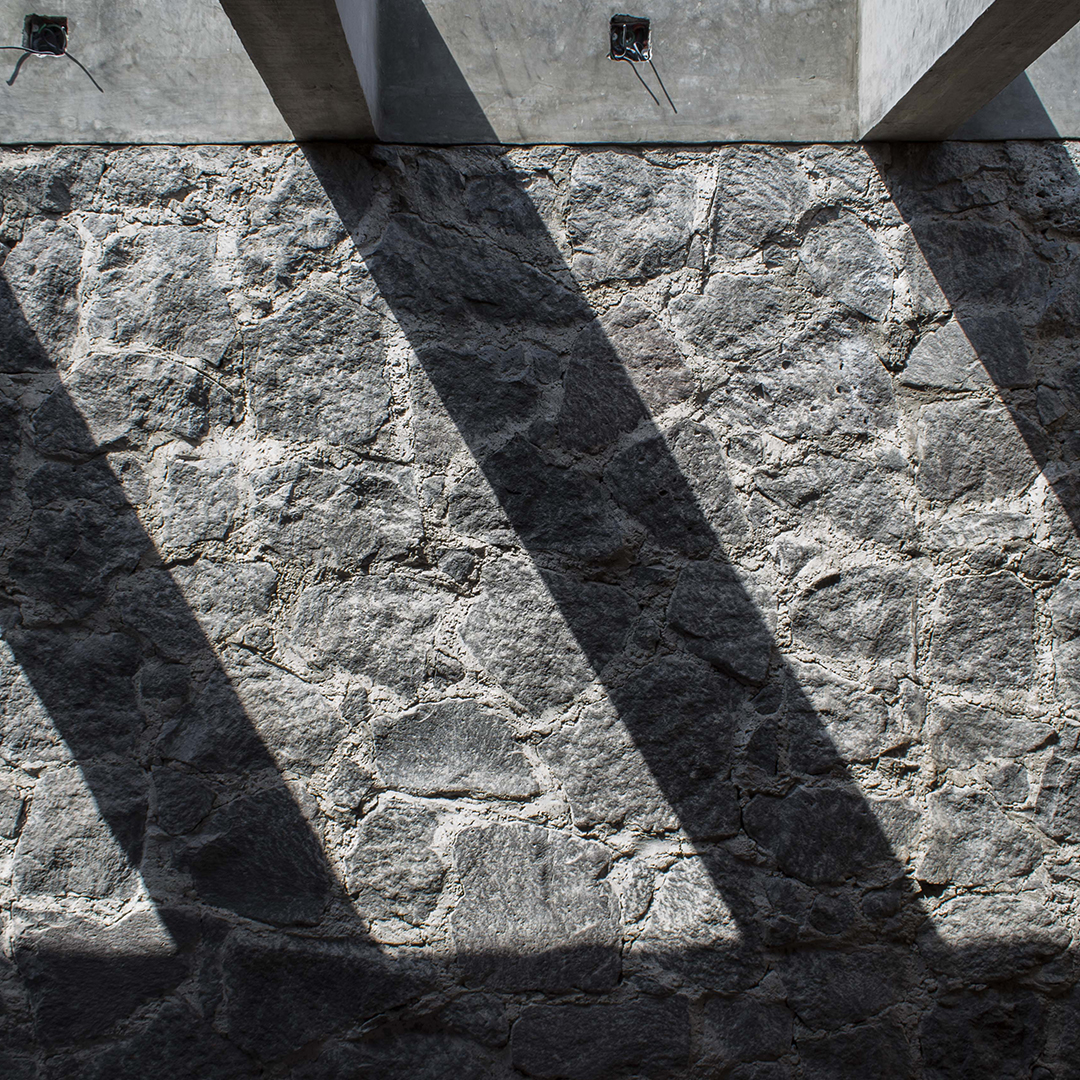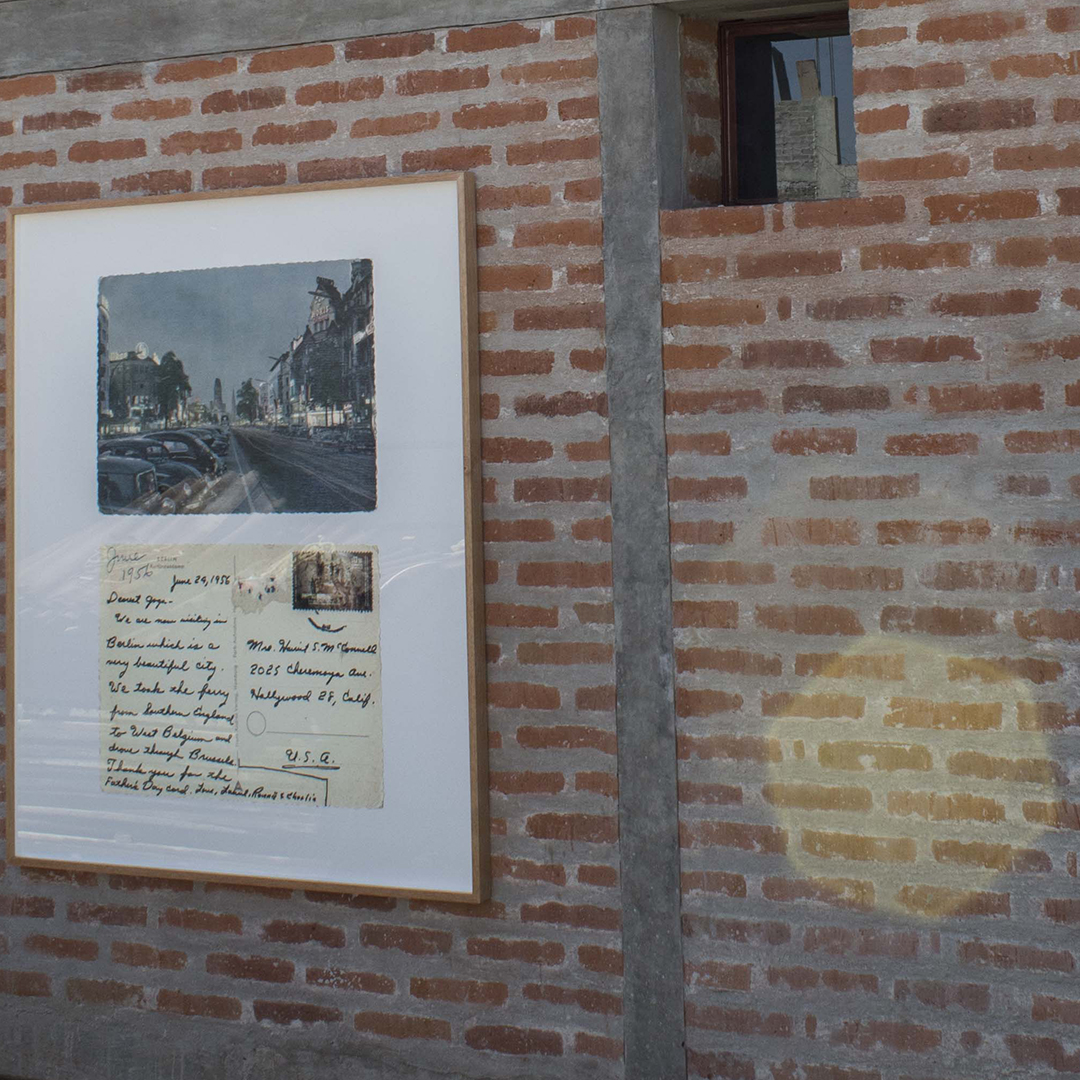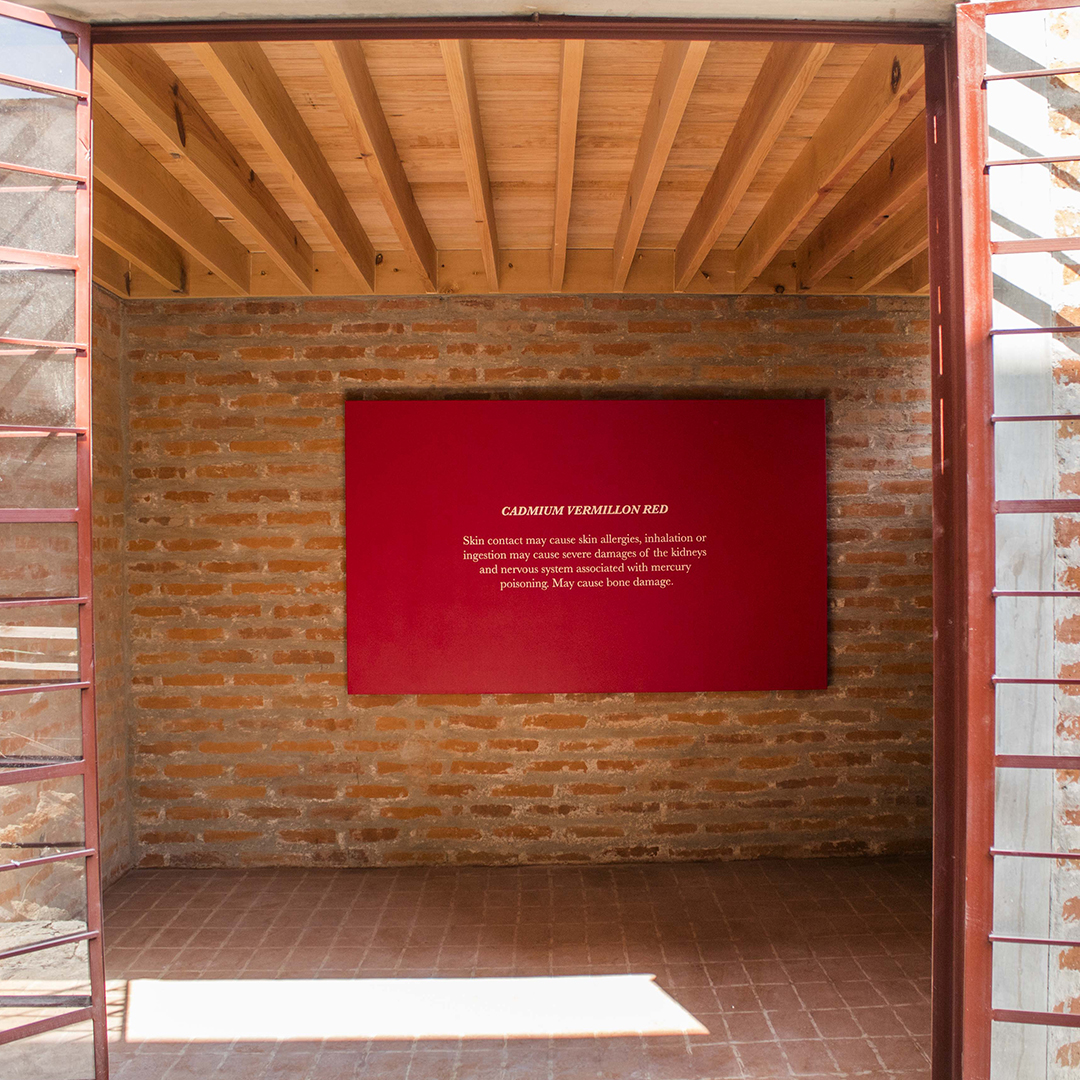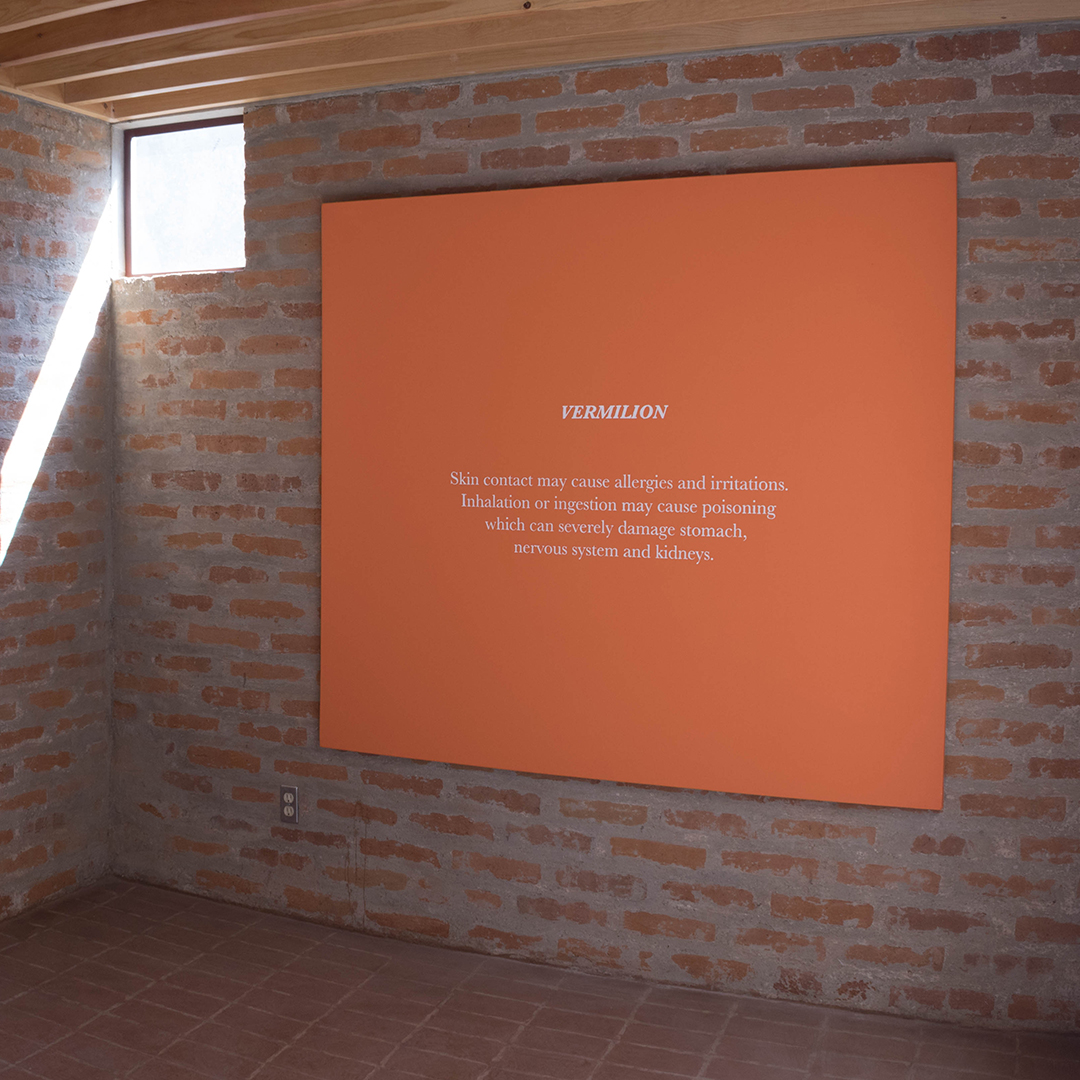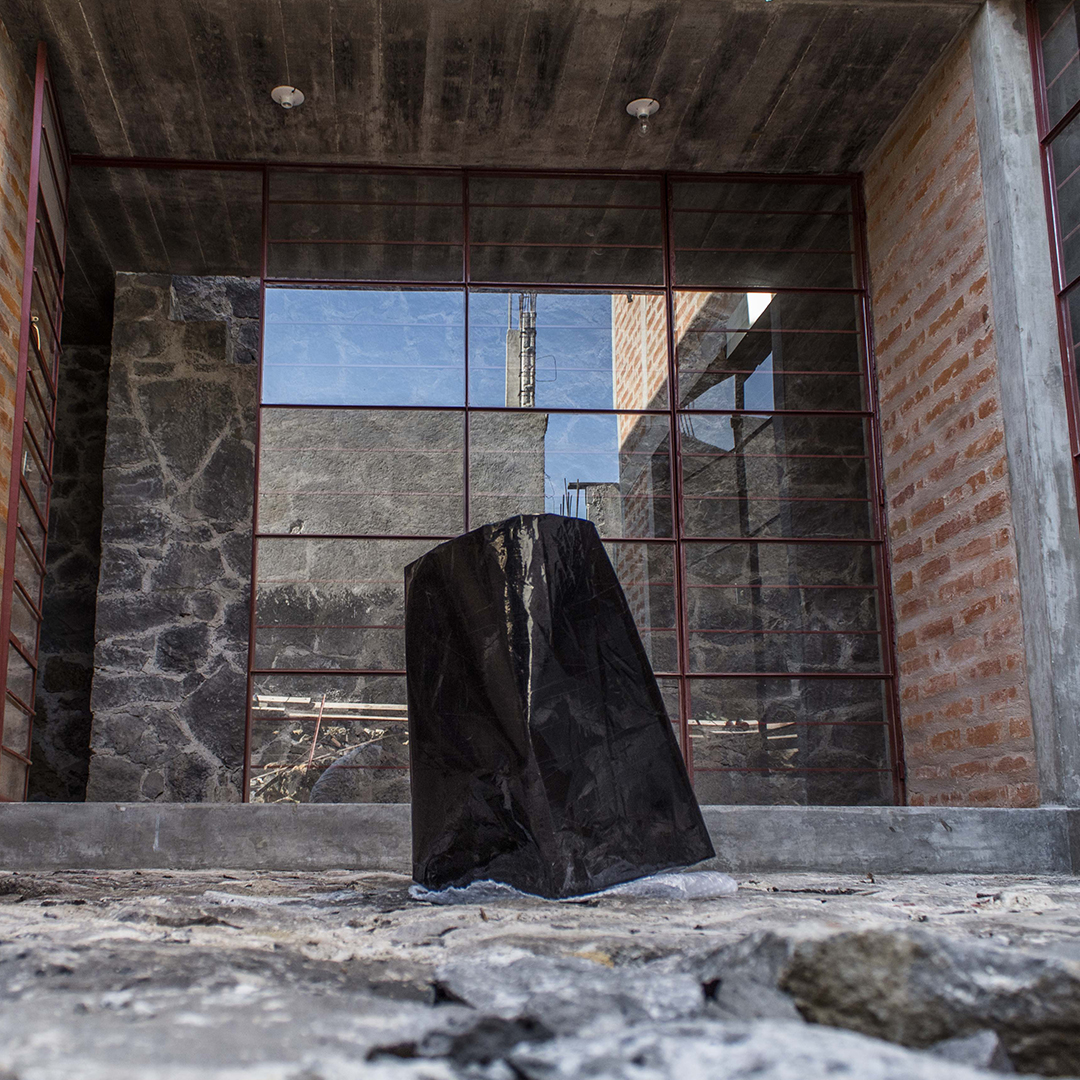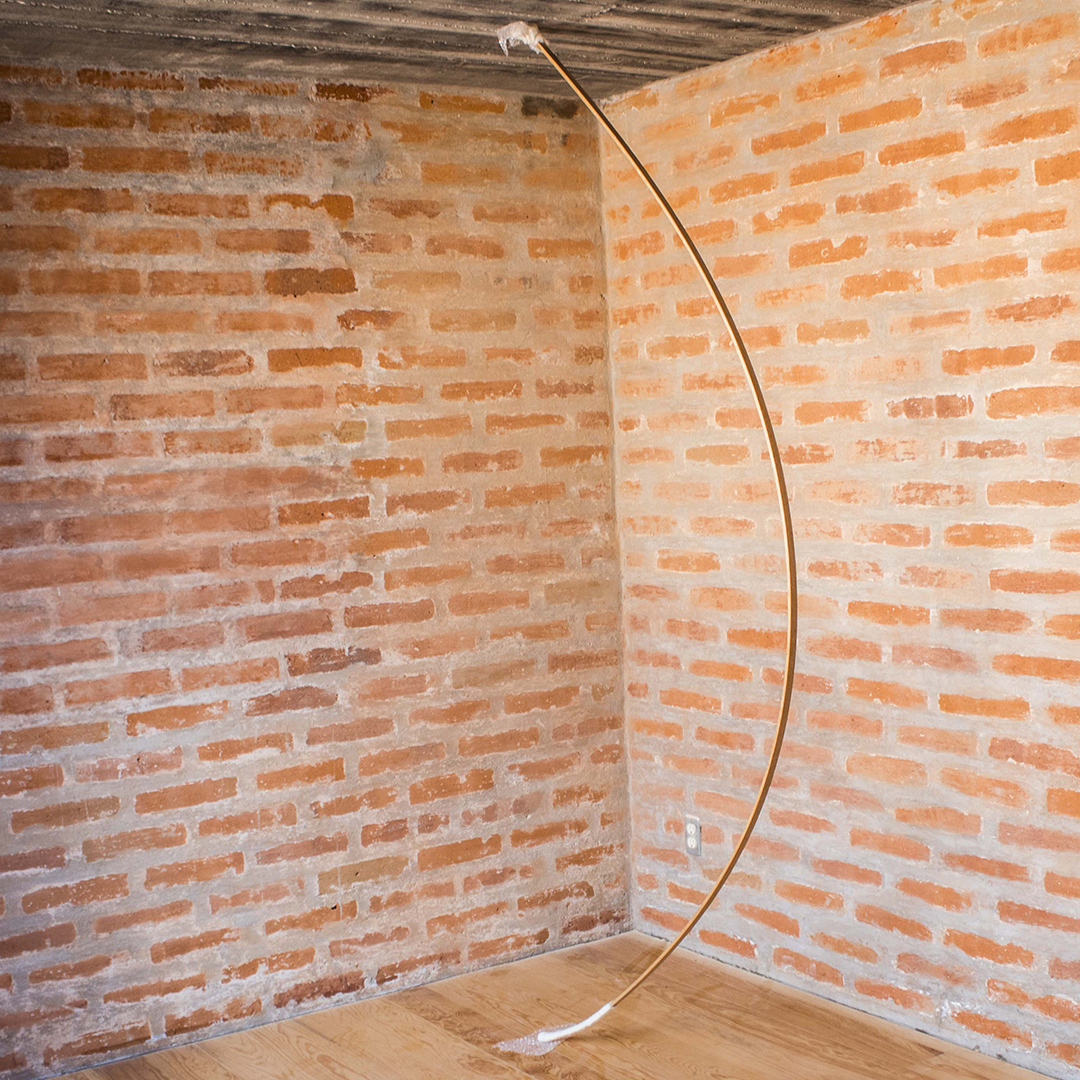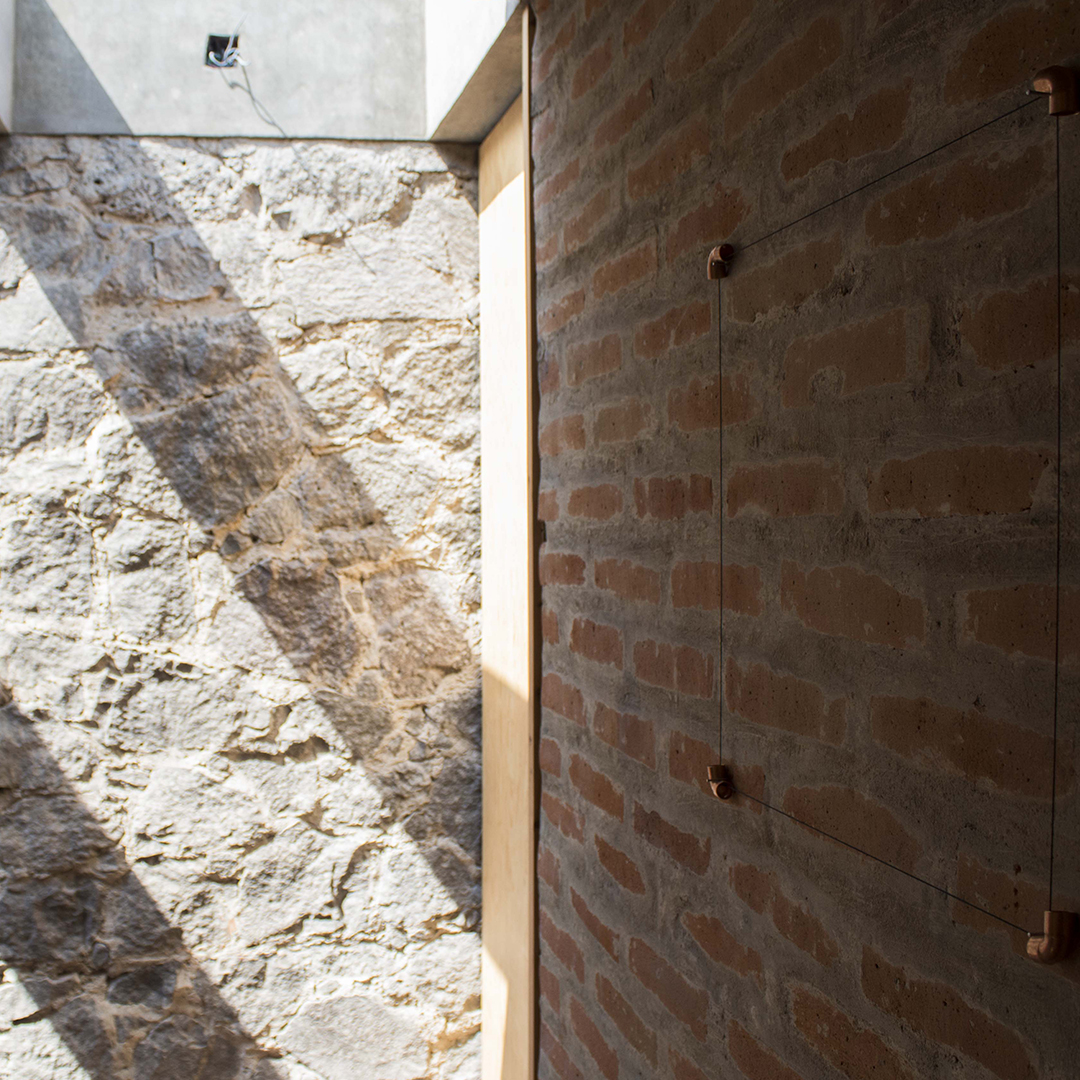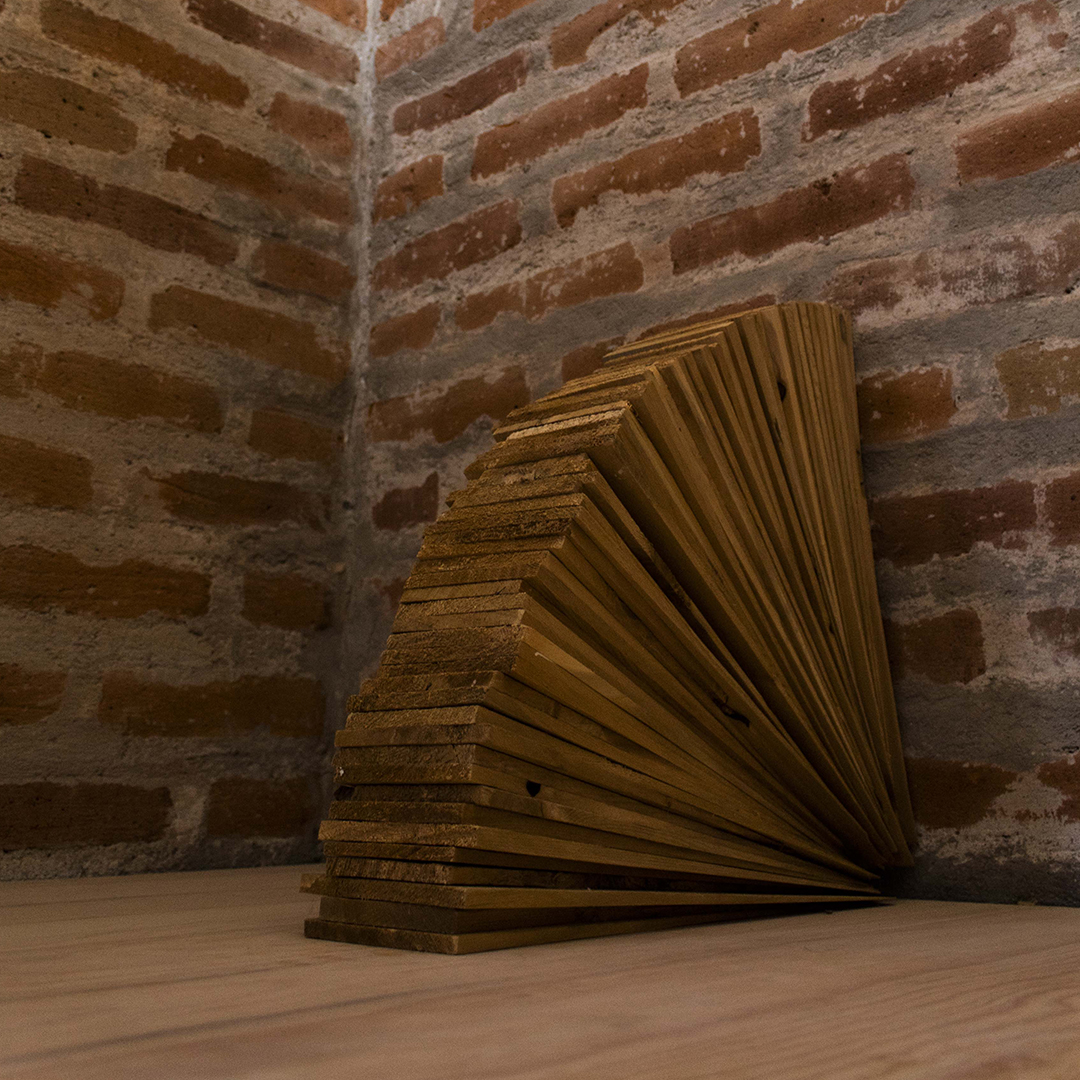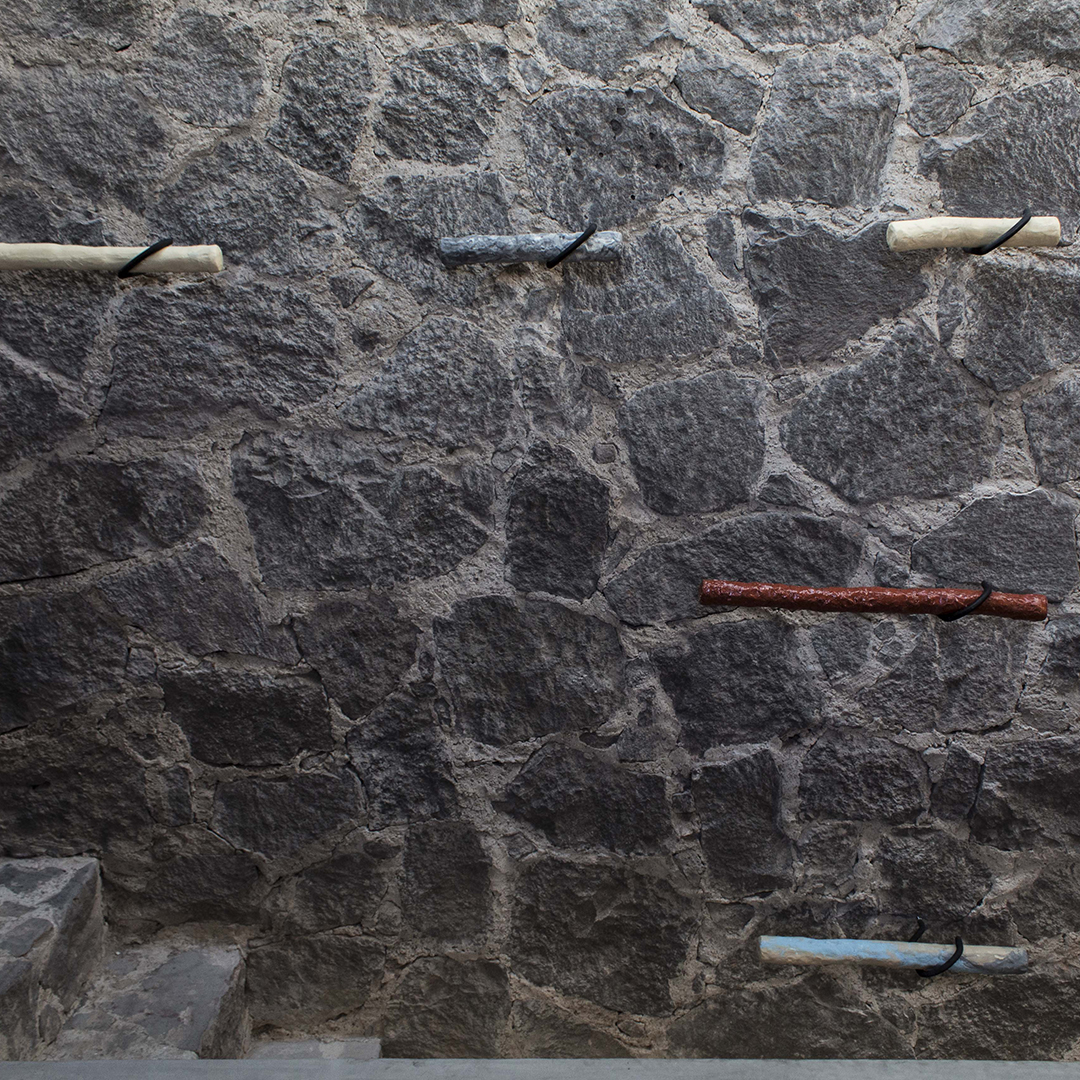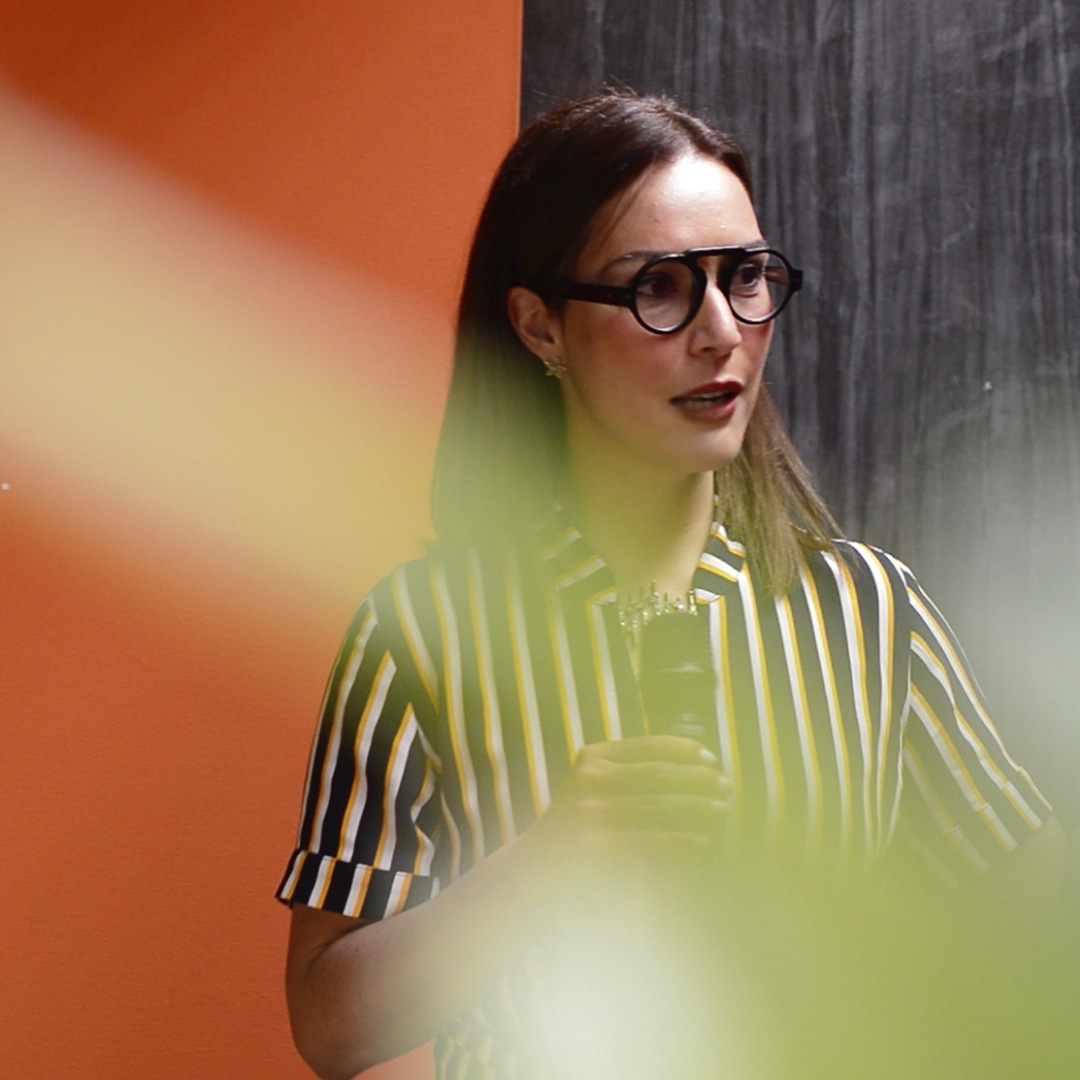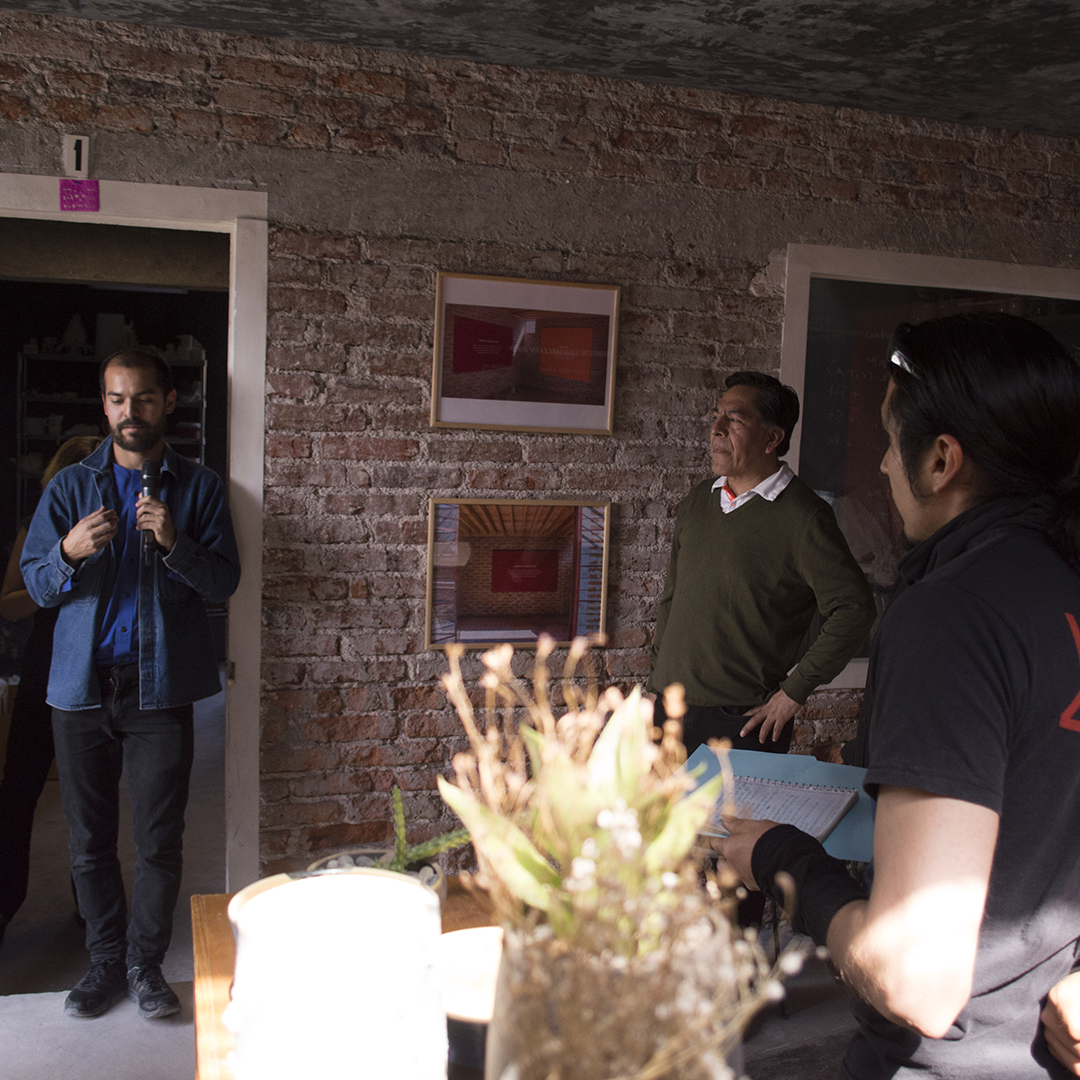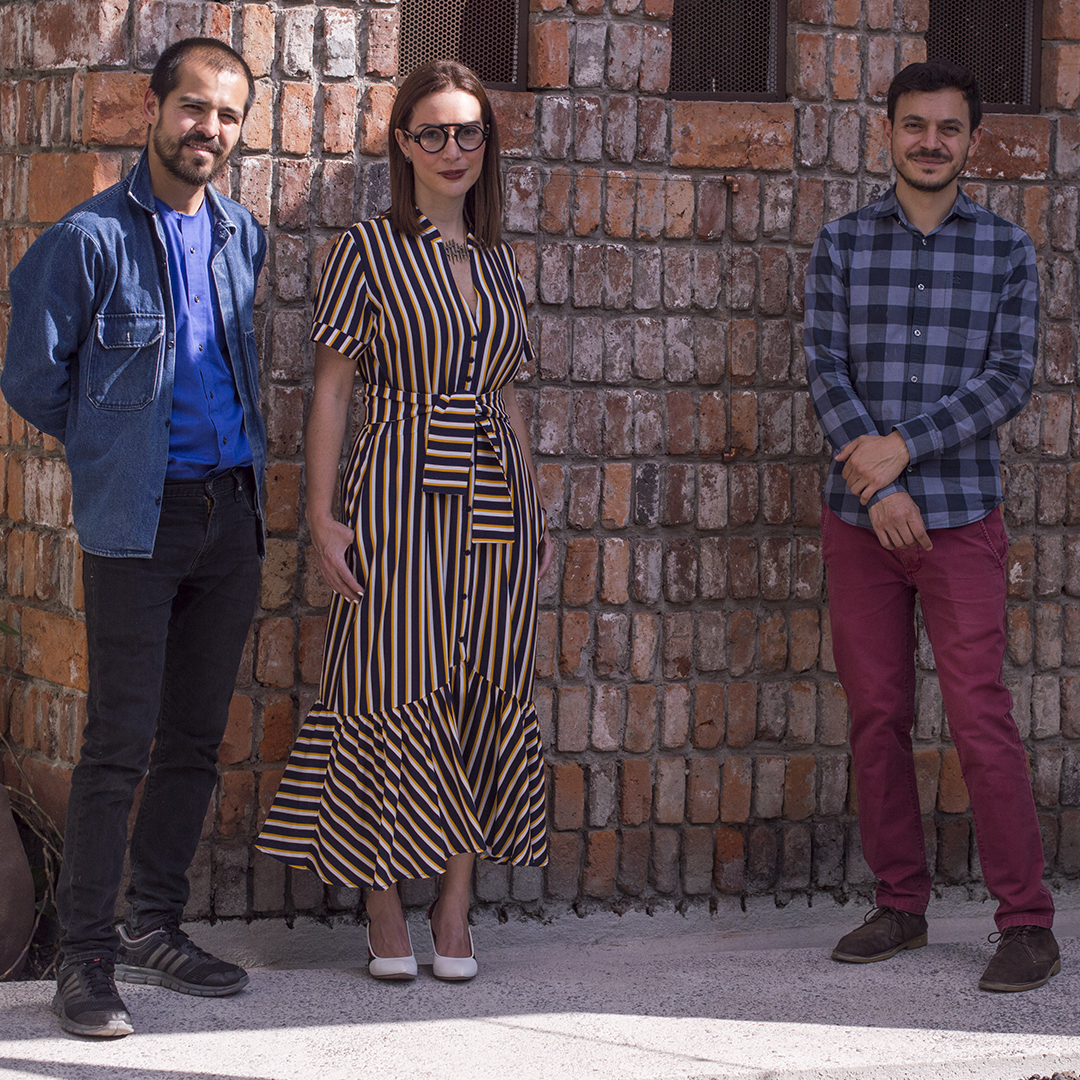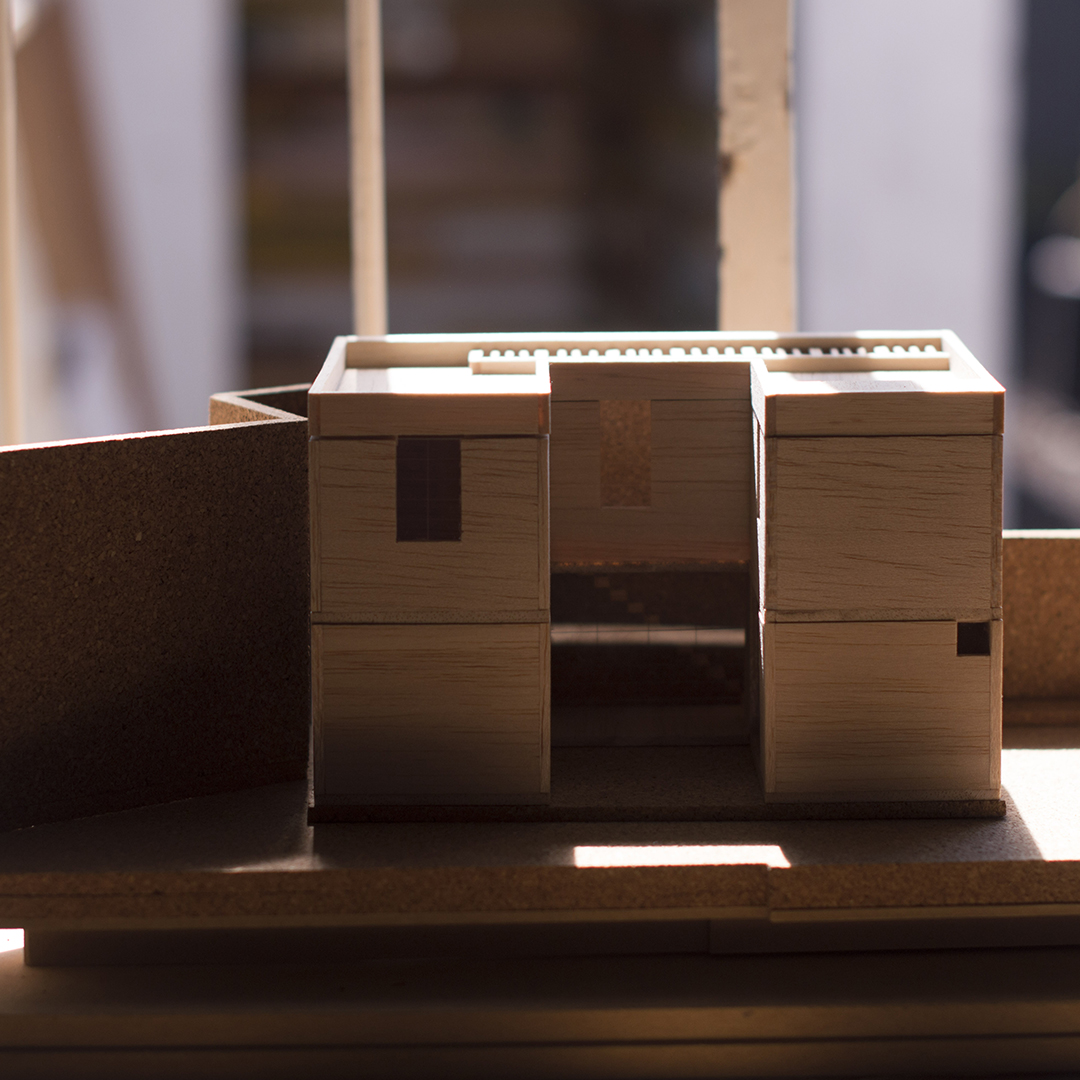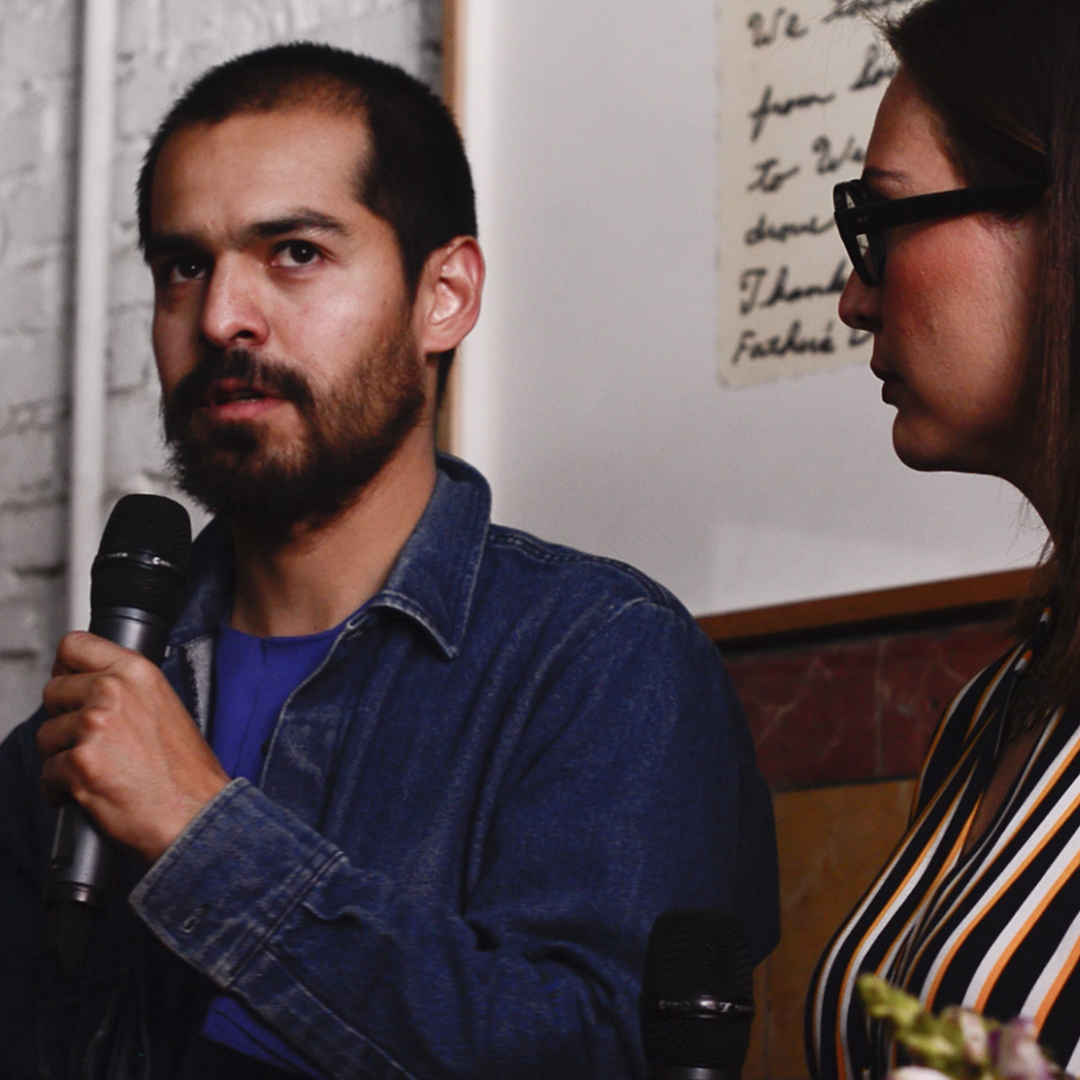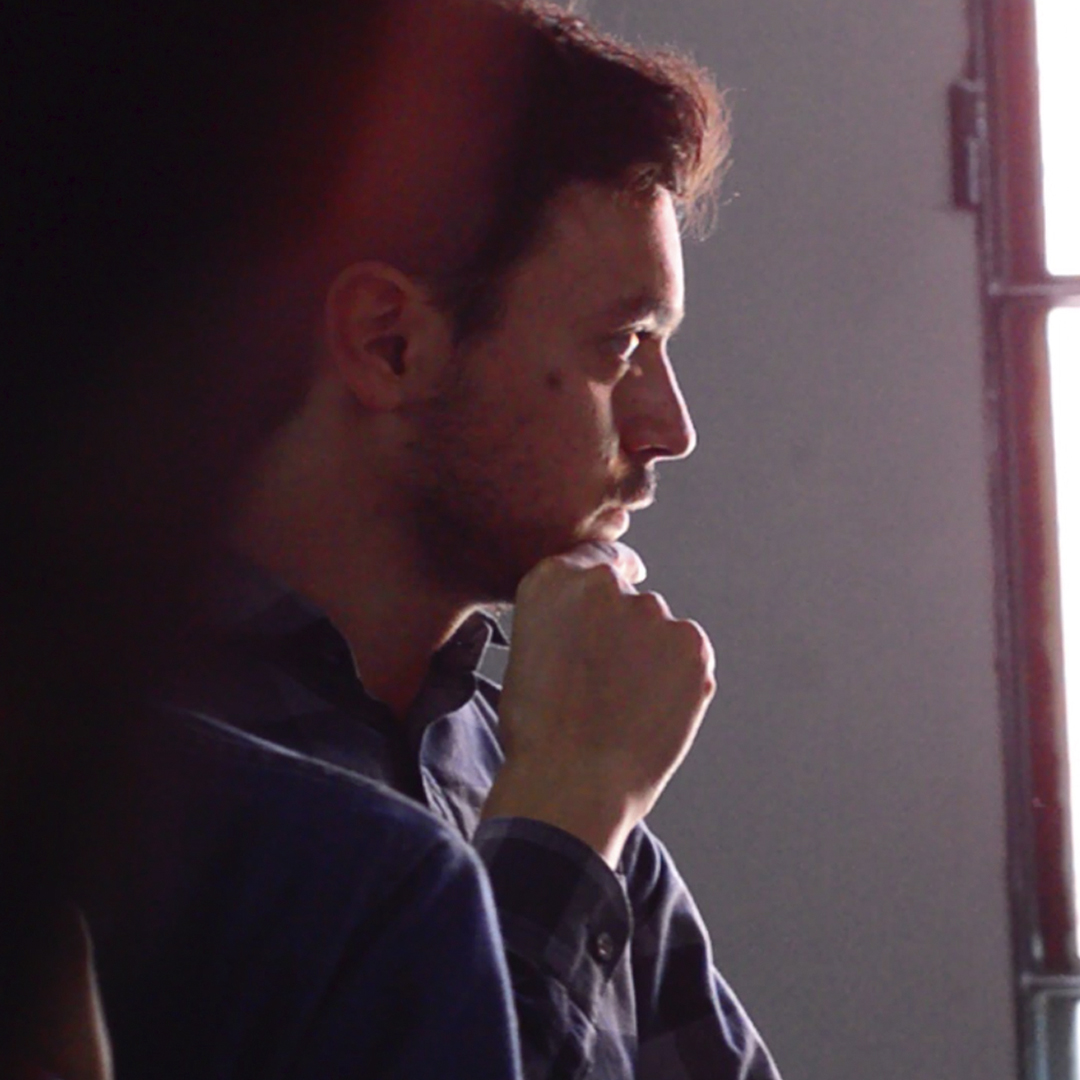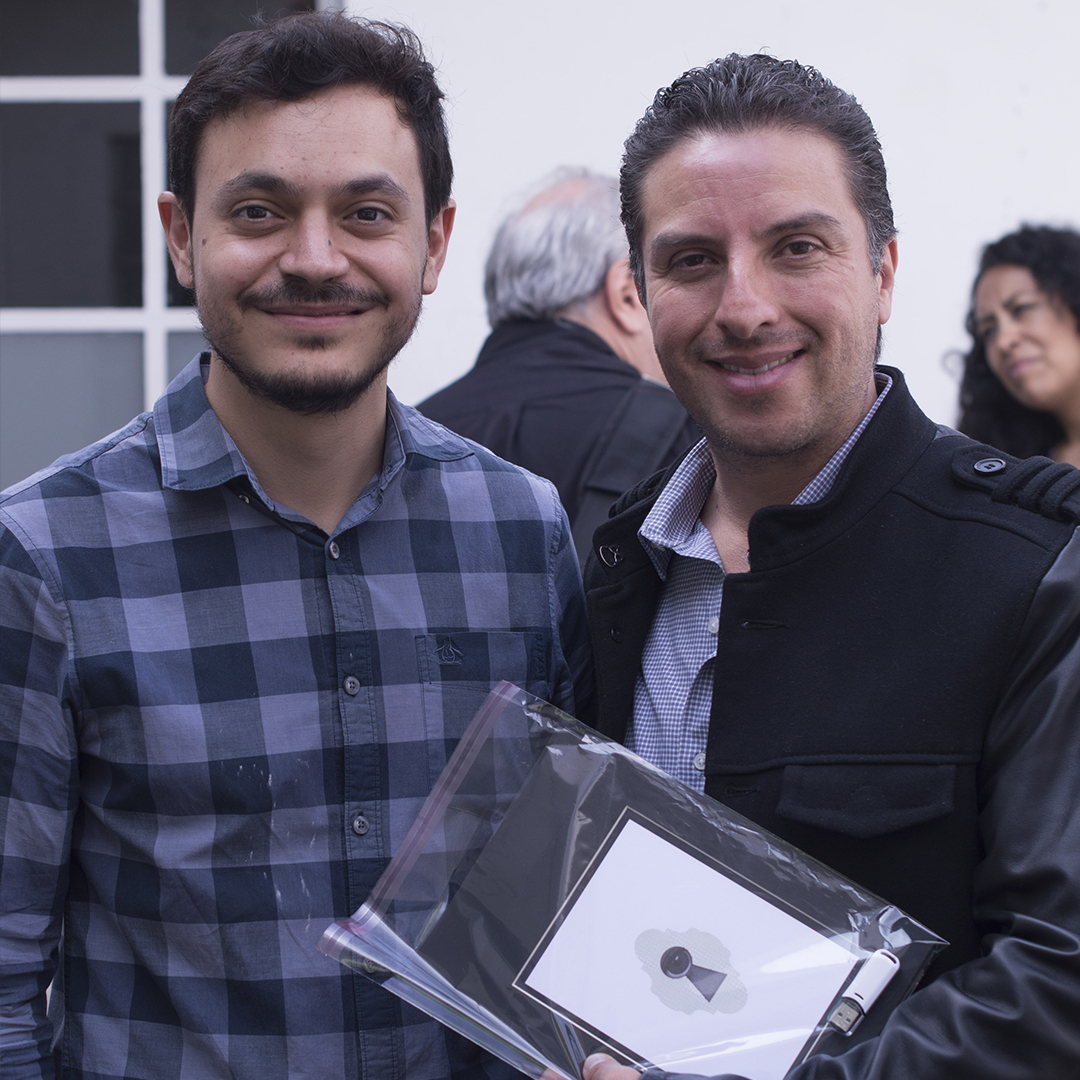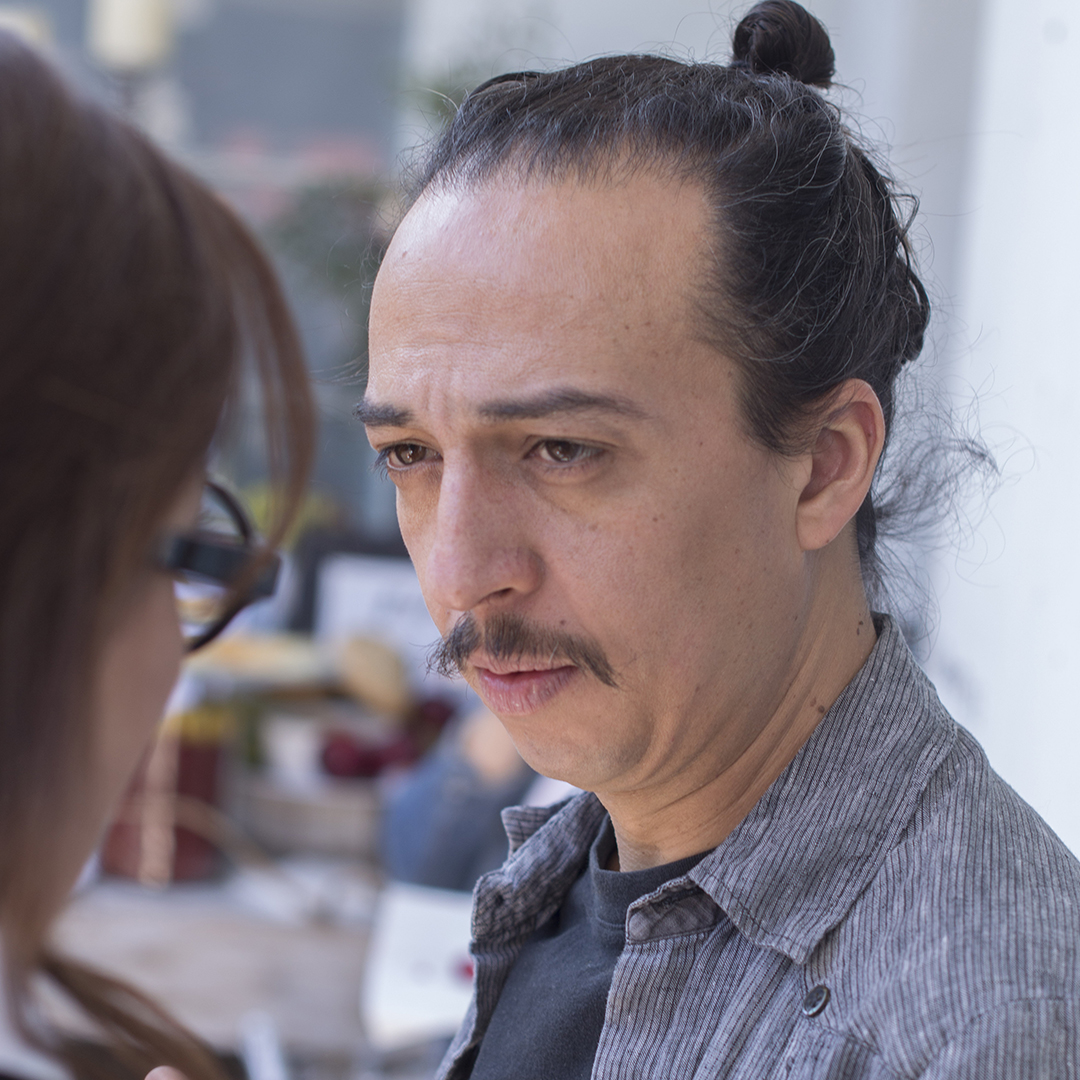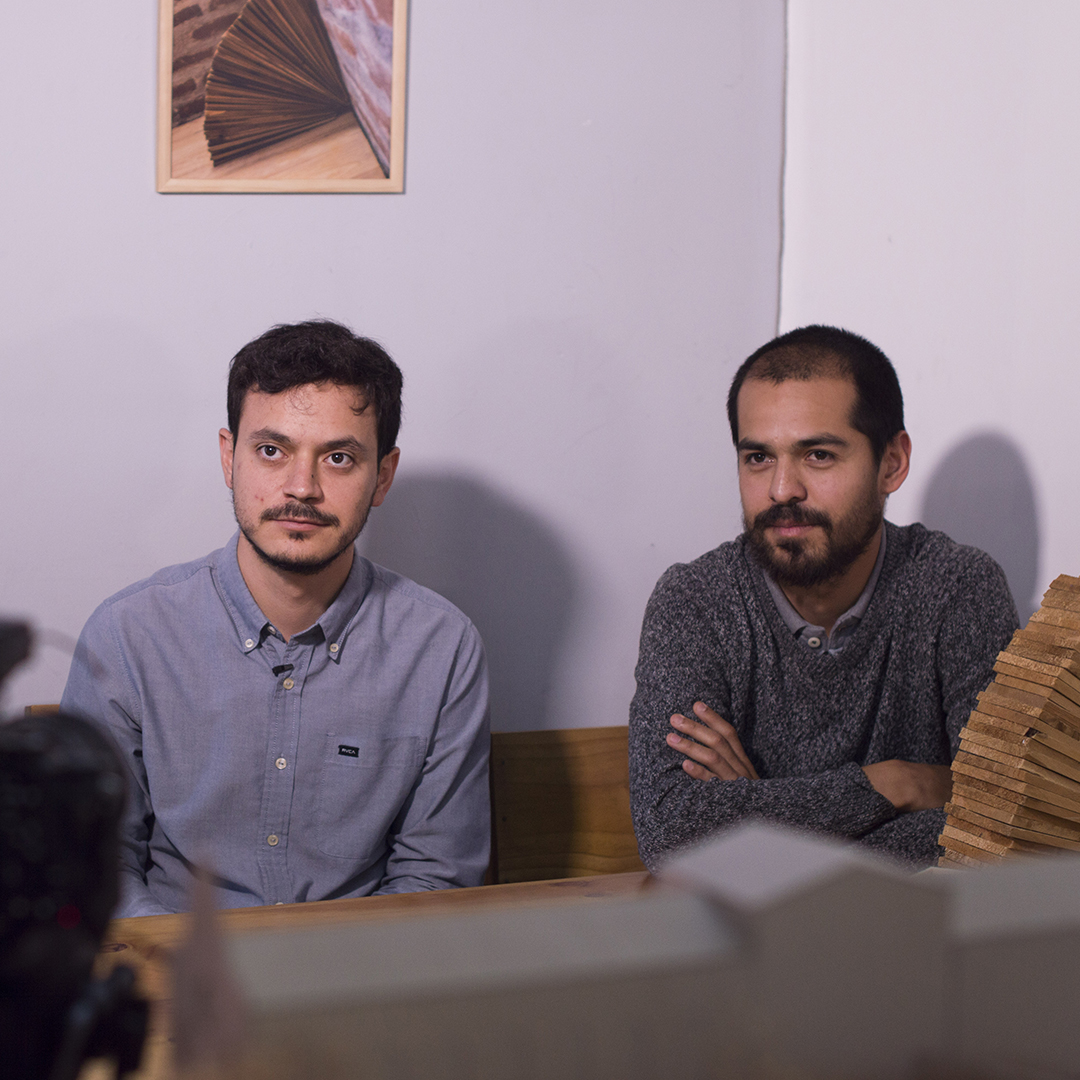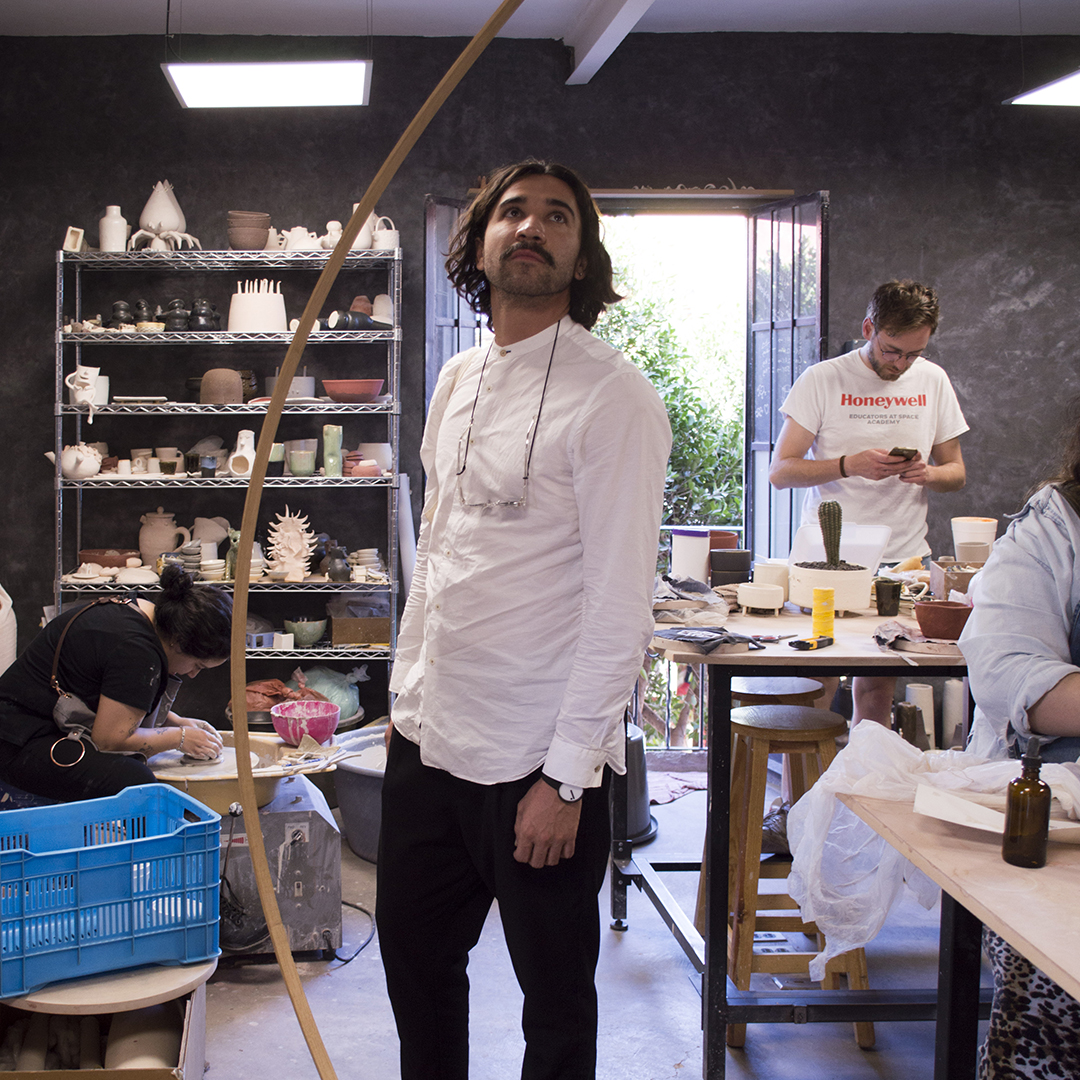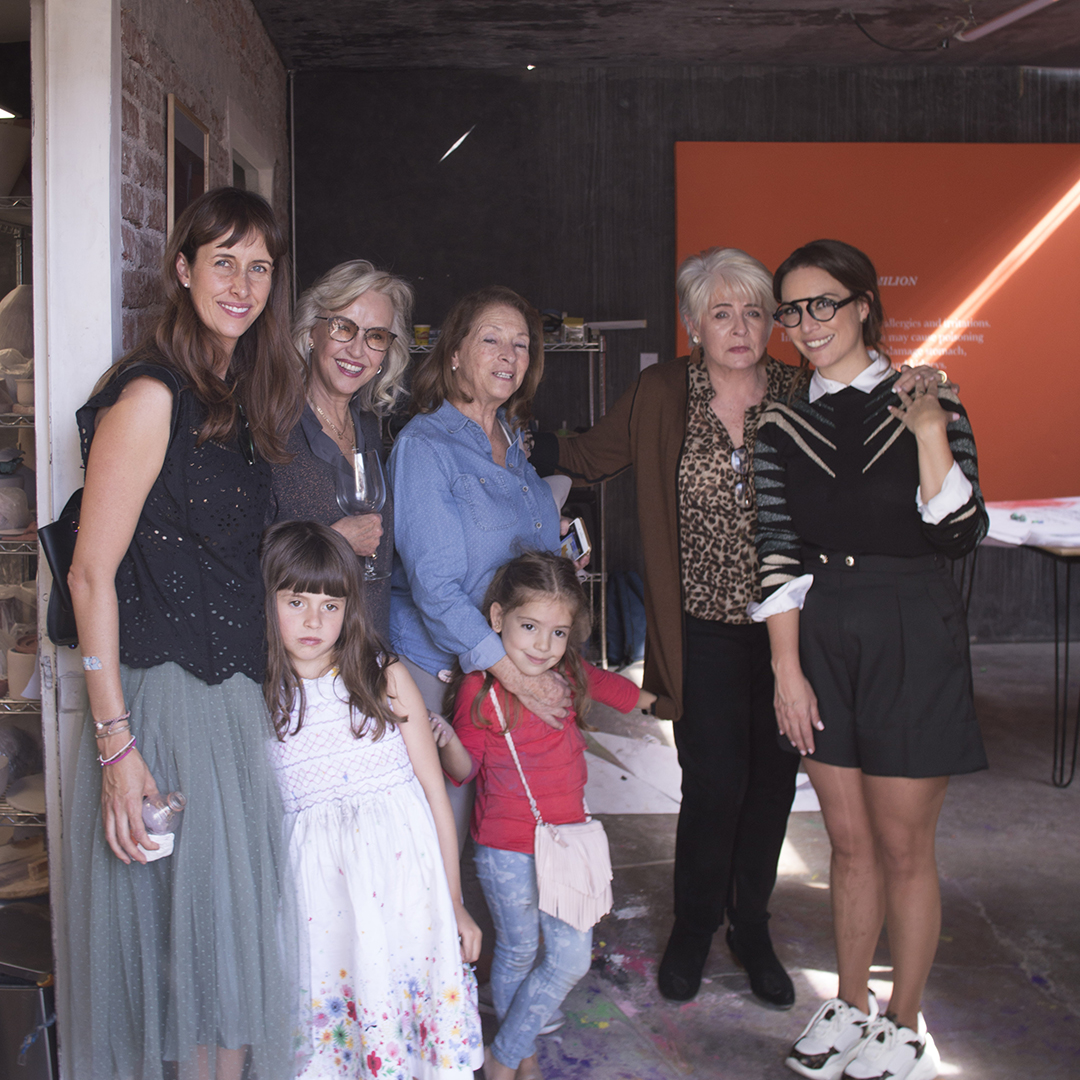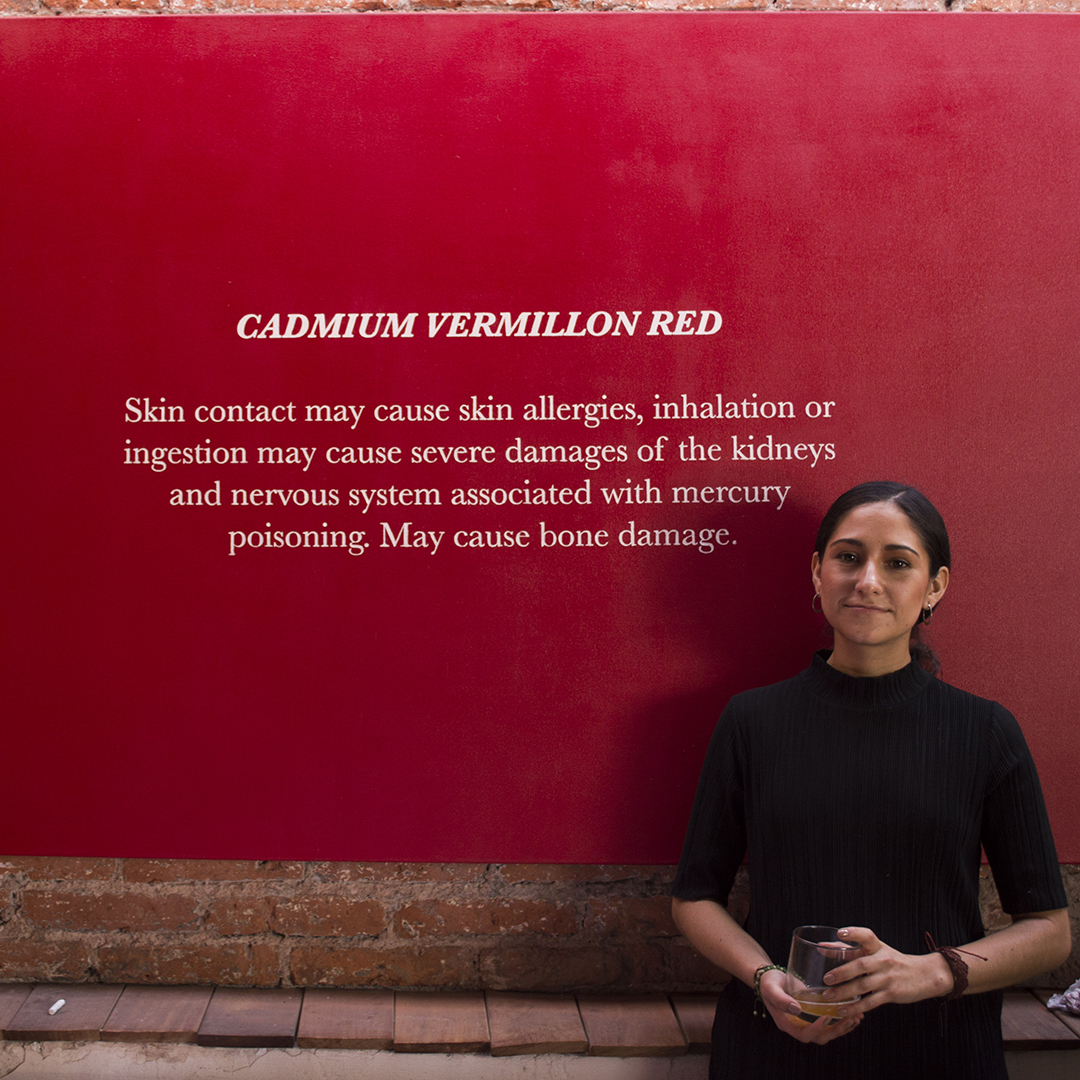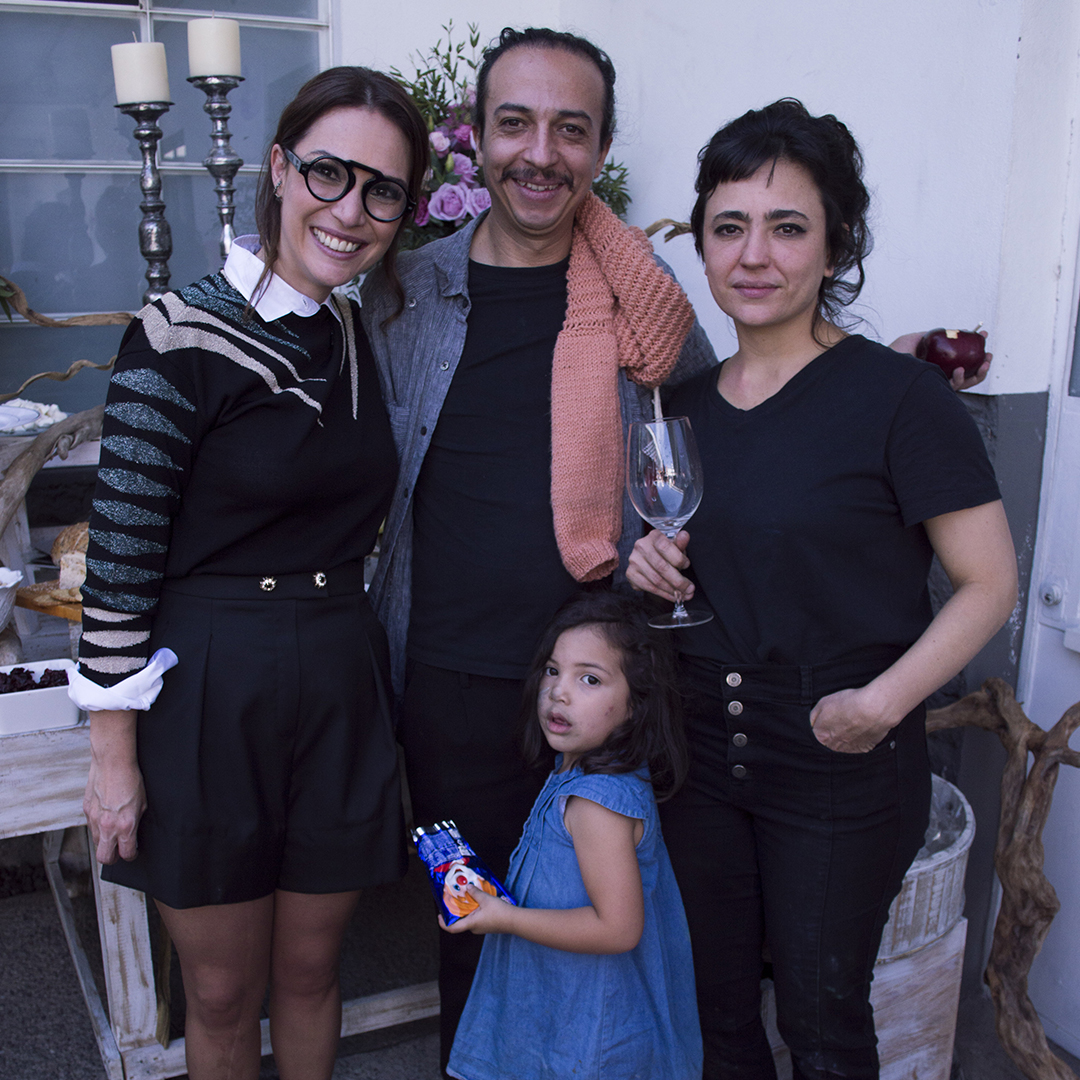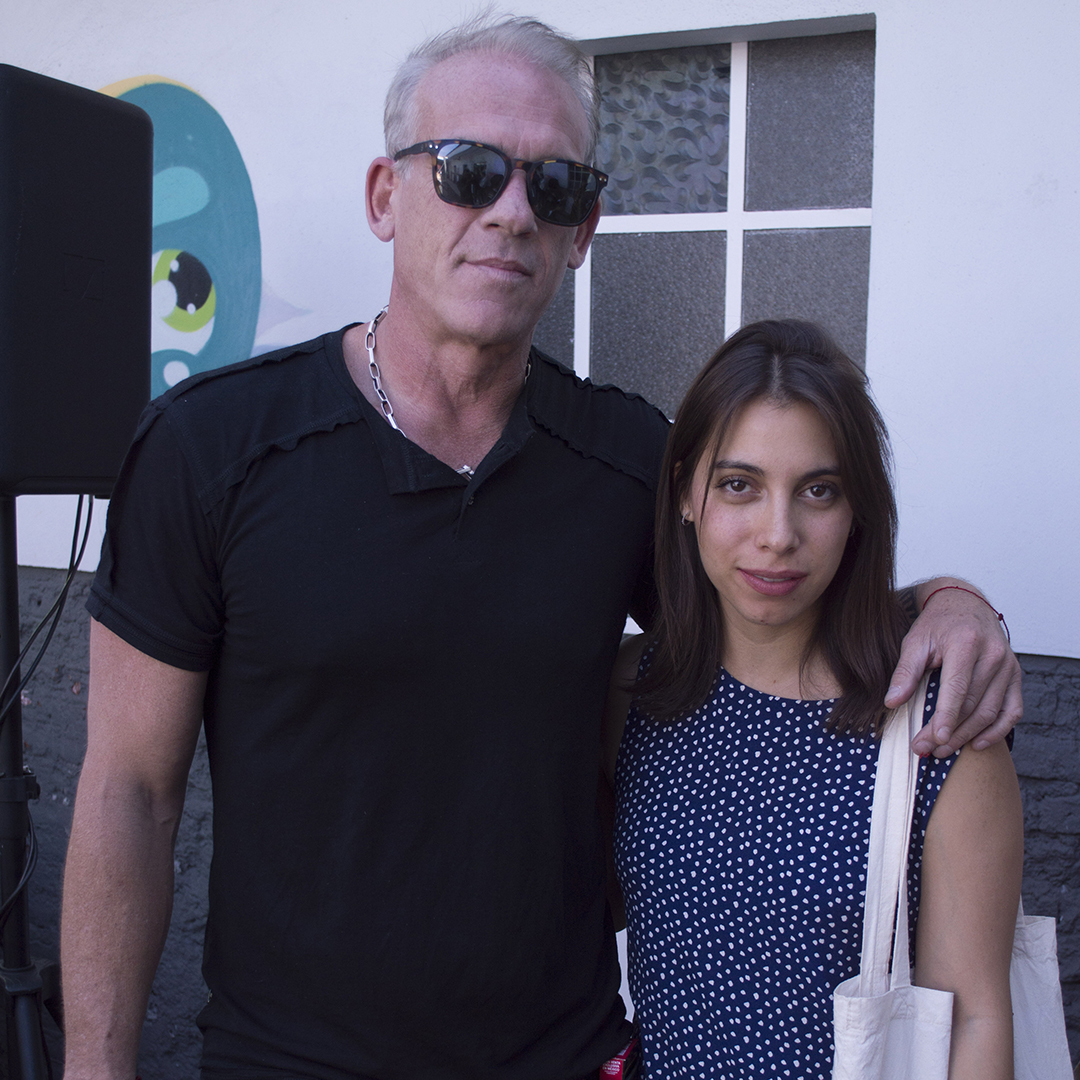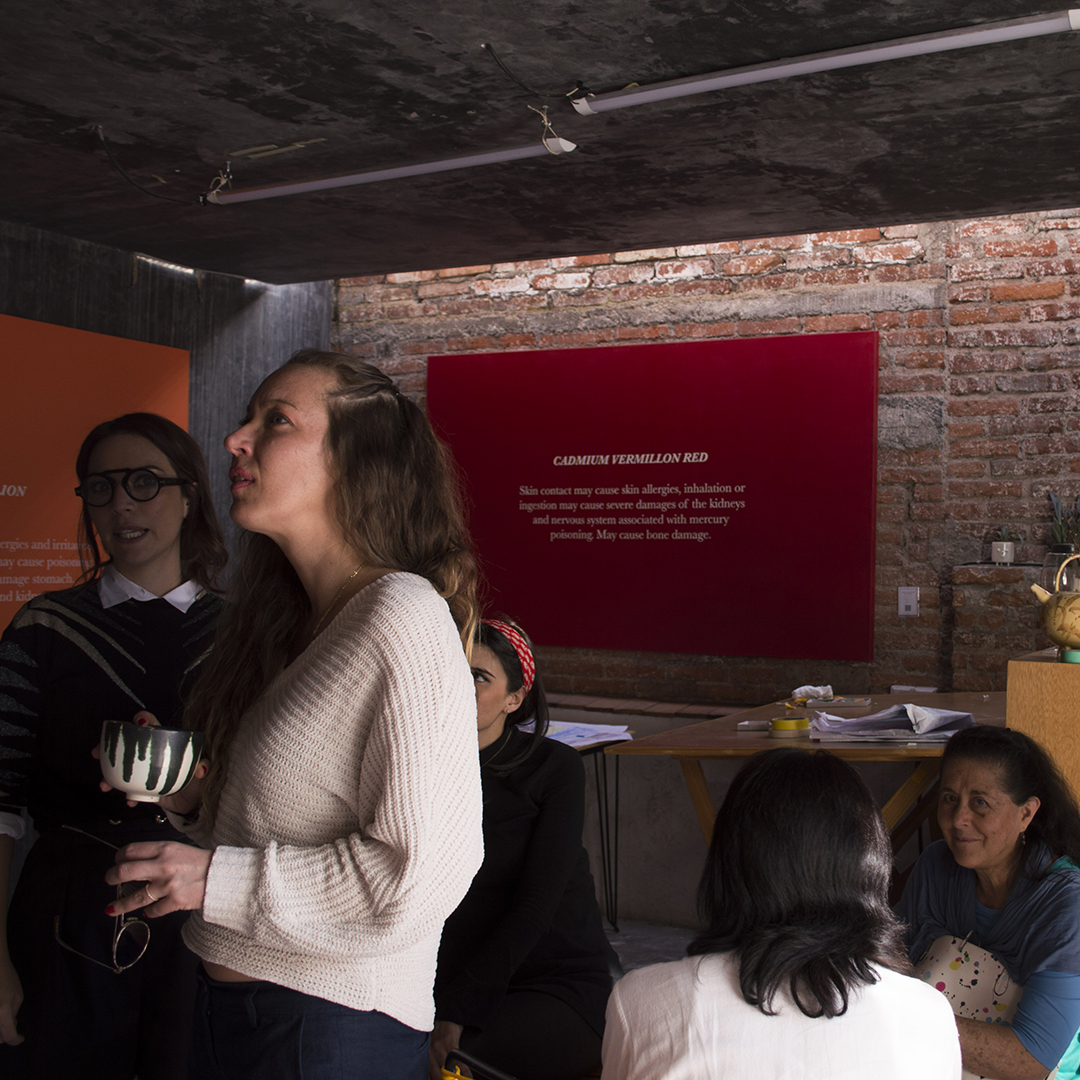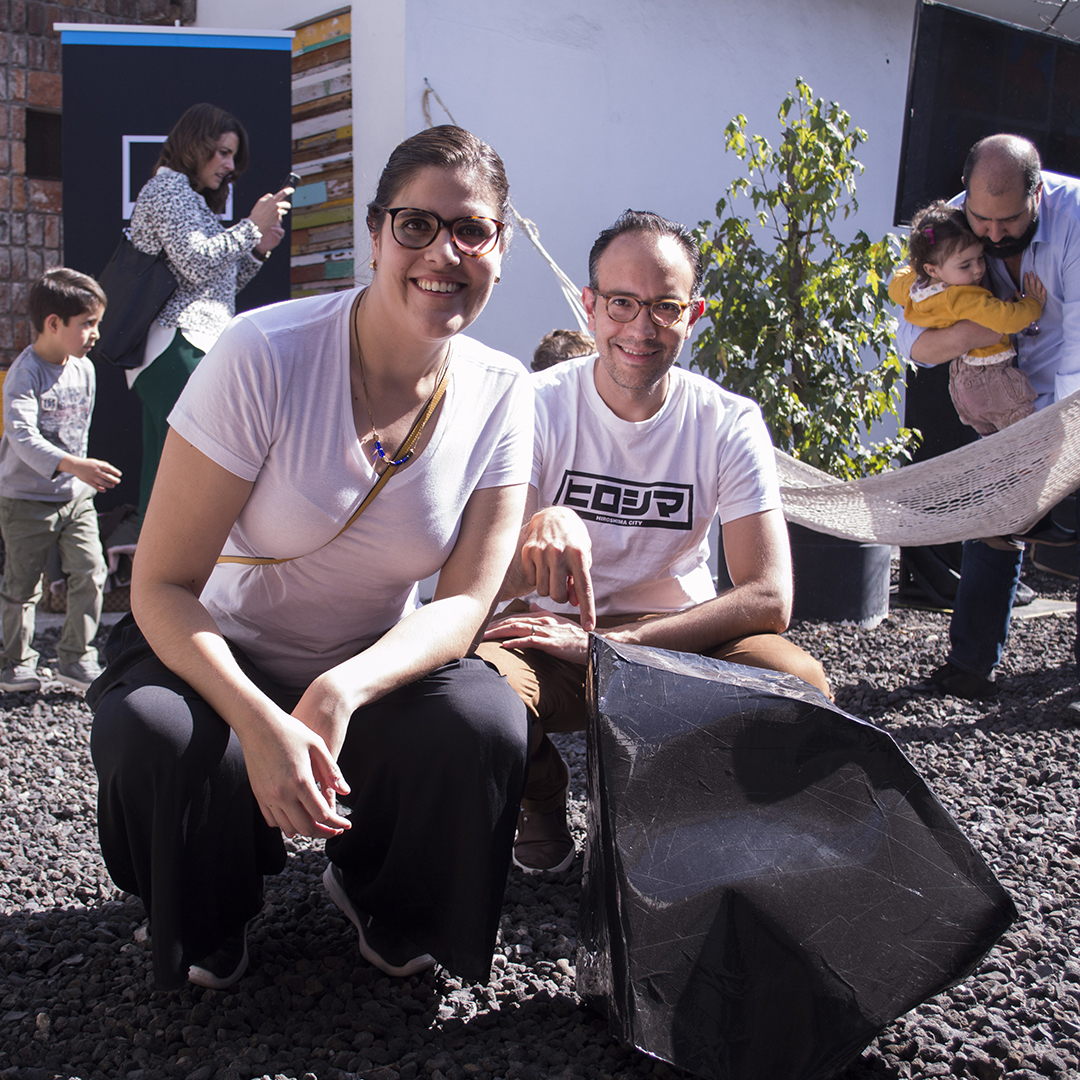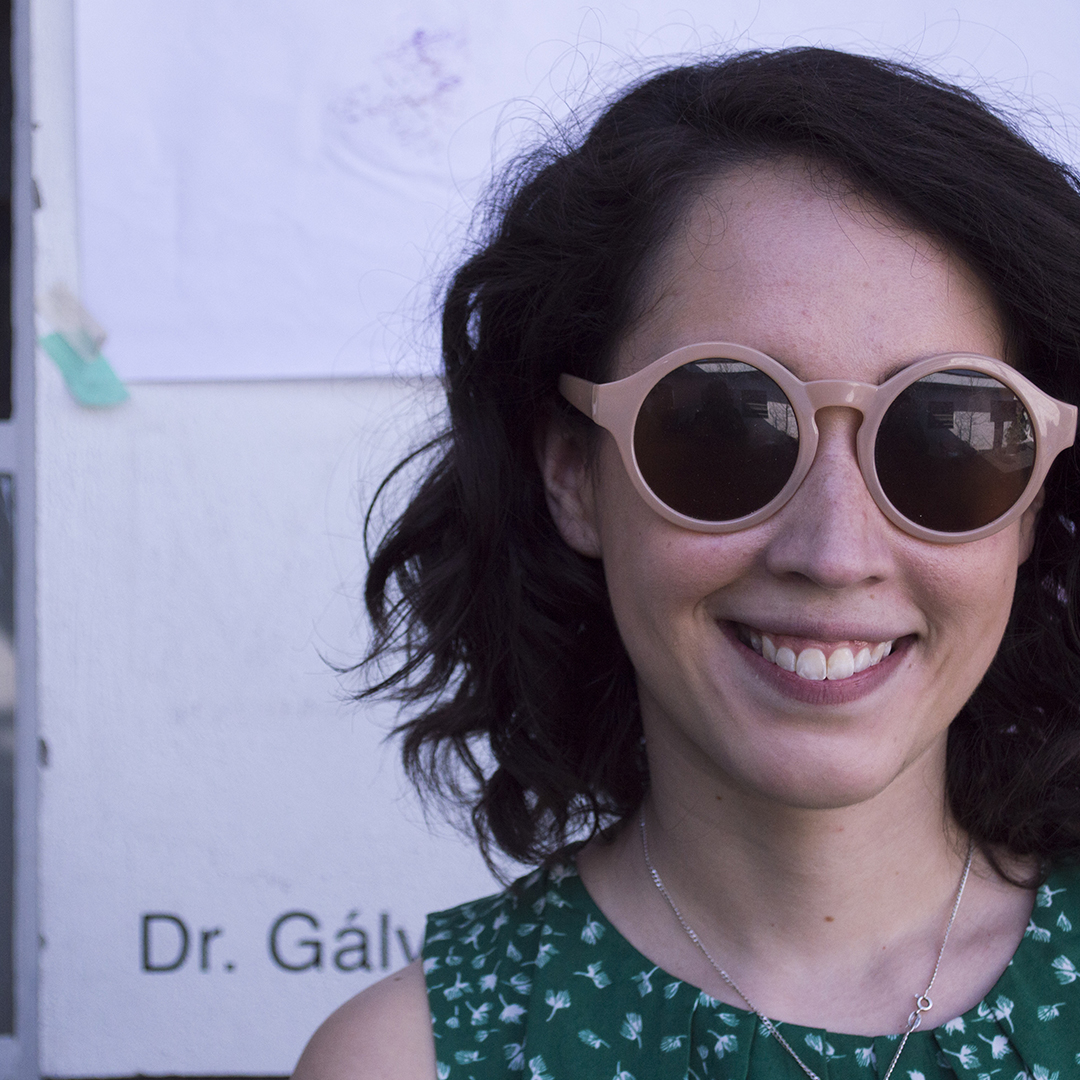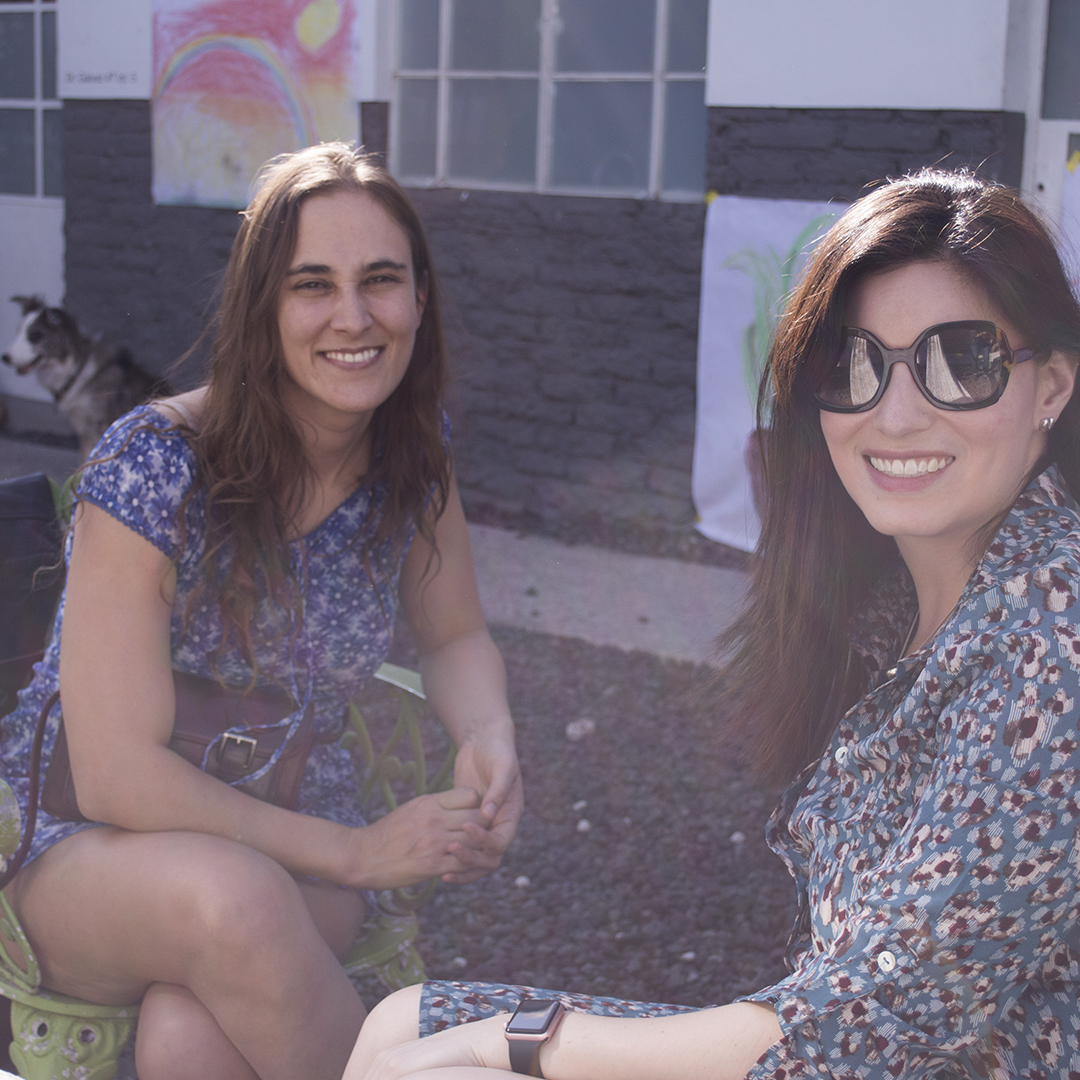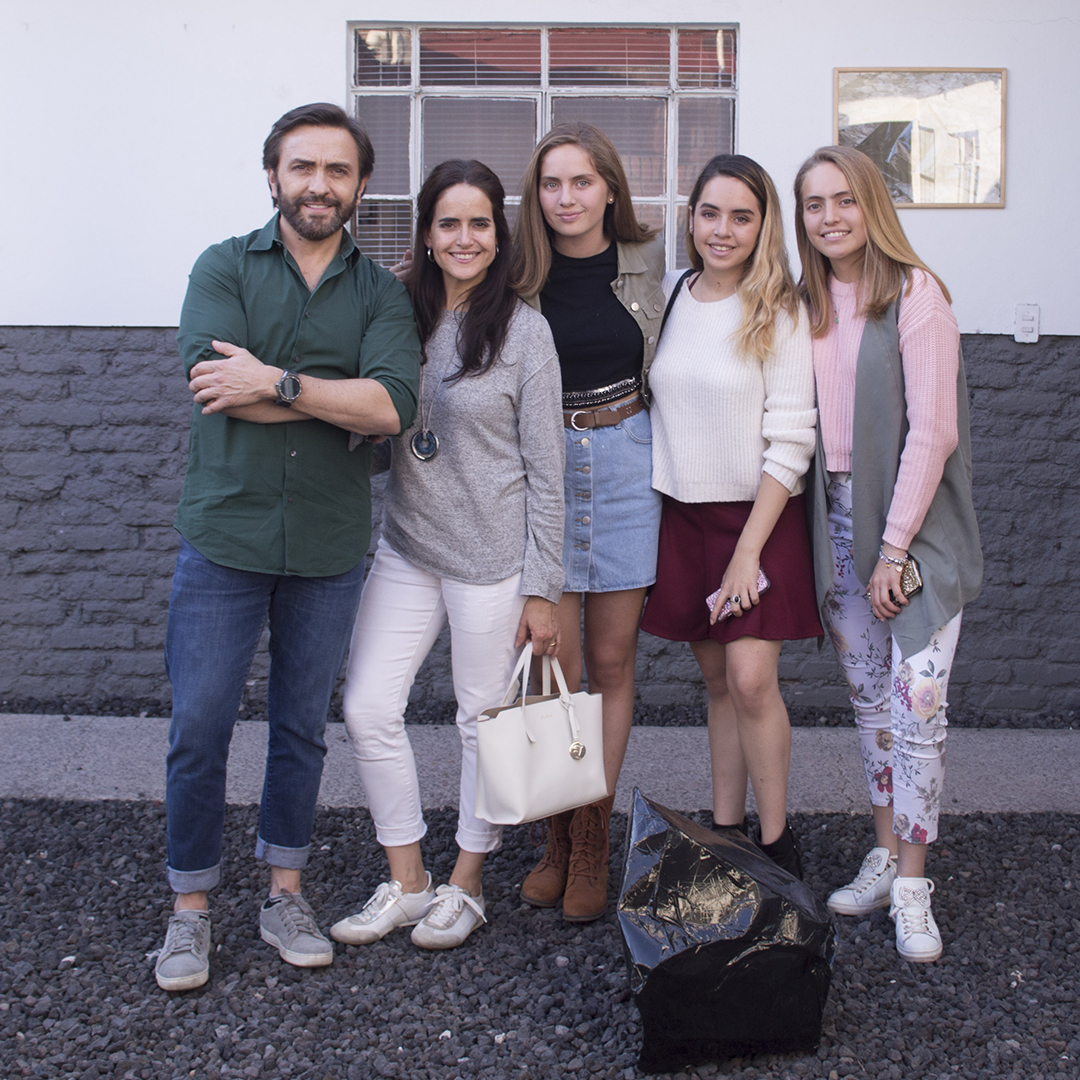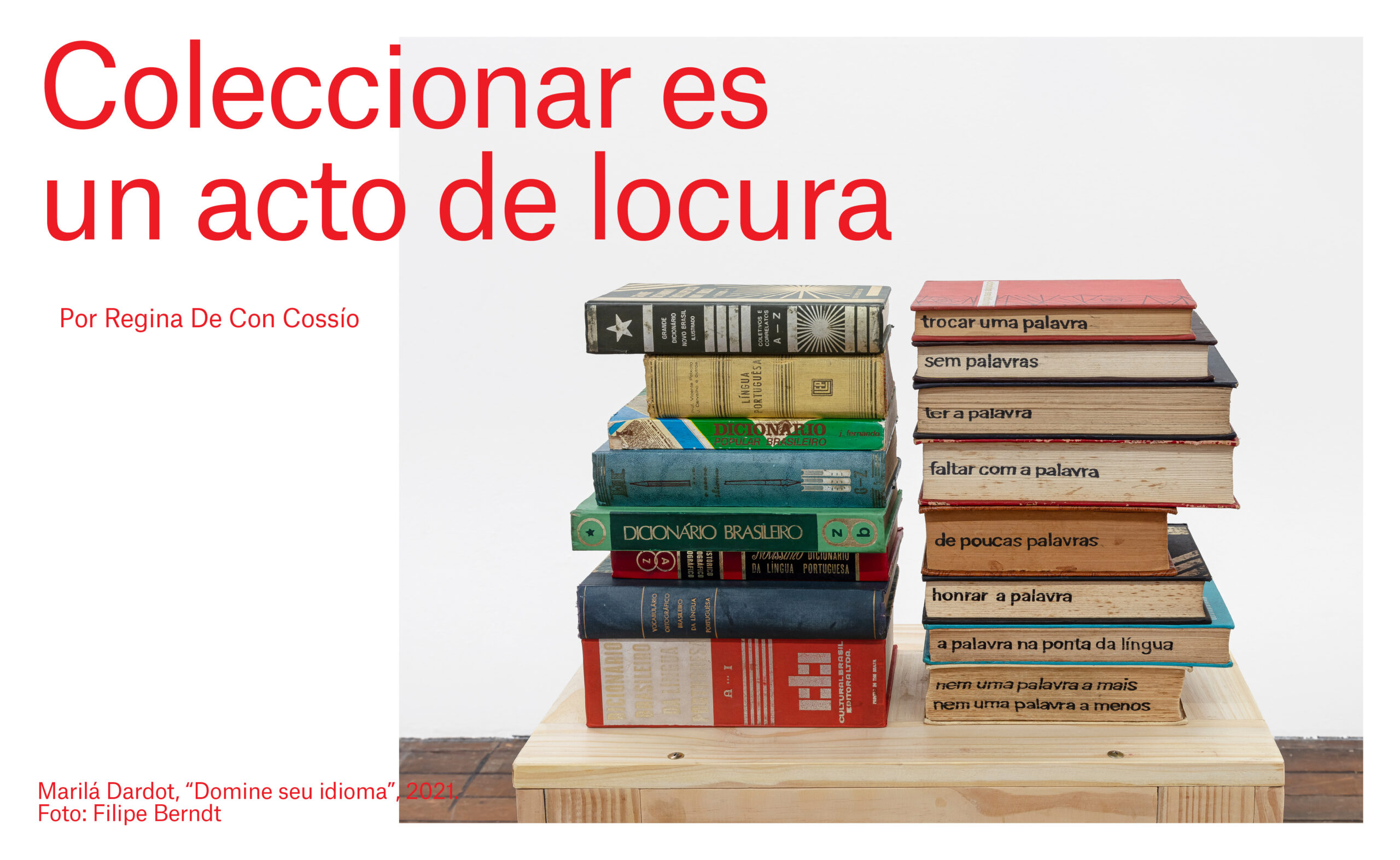Casa Nakasone
ESCOBEDO–SOLIZ, GABRIELA SALAZAR,
GUSTAVO ARTIGAS, MANUELA GARCÍA
December 1st. 2019
Sybaris Collection curates “Casa Nakasone”, the new architectural piece by Escobedo- Soliz, with pieces by Gabriela Salazar, Gustavo Artigas and Manuela García. The exhibition will be presented to the public as a reproduction of the original installation at Dr. Gálvez No.7 on December 7th 2019.
There is a common belief that only things that can be seen, actually happened, as if there is no place for private memory. “To” witness and “a” witness are the key of history. Herodoto and Thucydides began the tradition many years ago. The importance of the trace, and the document have only grown in time: notes, catalogues, archives, photos, all resources that evidence that yes, something took place. I wonder if “History of Art” is something else than this effort to record the artistic experience and the objects produced during it? Read more
Is Art History in this regard an artwork itself? Our artsy consumption takes place most of the times through secondary resources: through books, media, art stores, image reproduction; through the records we have of it, through the voices of the experts and through history itself. The question about the inherent value of an artwork, therefore stands. Is there any kind of property belonging to the artwork itself, one that wont change with the contexts? Is the artwork ́s value immutable? Can the artwork ́s meaning change, depending on where it displayed and on how is it displayed?
In sum: what is the meaning of accessing to a piece, or a series of pieces, or an exhibition only through documents? Through the records created of it.
Casa Nakasone
The art exhibition Casa Nakasone dialogues with these questions, and it is also a result of it. The project began with a piece by Gabriela Salazar I wanted to exhibit (Hook Crooks, Fair Fools), a very material piece, similar to a rail of pieces. I had the opportunity to discuss with Pavel Escobedo and Andrés Solíz from Escobedo-Soliz architectural firm, and merge in the project together. They were constructing Casa Nakasone, a residential piece and before delivering the home to the final client, we thought of activating the space with art. We decided to bring the exhibition to the public through the documents.
The Pieces Exhited
The pieces selected were primarily conceptual and we should be a concept out of it. “Nakasone” as word, as concept. If we remember, ‘Word-art’ became prominent in the second-half of the 20th Century with the development of conceptual art. The viewer confronts an artwork replete with words, which easily convey a message. The message is akin to a poetical composition insofar complex meanings are contrived and reunited in few sentences. Yet the message contains something more than poetry. With John Baldessari, for instance, we see an ironic use of words; with Barbara Krueger we see a political use of words. Being original in this art genre requires mastery, for one has to effectively link or connect meanings with the distribution of words within a surface. This already requires a design skill and choosing a personal typology, but in the artwork we also need something more: the distributed words must adequately connected with pictorial forms. In the case of Artigas’ Vermilion (2017), the used colors not only exemplifies the label which refers it (“vermilion”) but it also relates color and label to meaning. Surprisingly, in this work the artist uses a shade of orange instead of vermilion, so this itself provide a dislocation in the immediate identification between the exemplified color and the label. Call this the ‘rhetoric’ of the work. It is not as if Artigas is only inviting to disclose the meaning of the particular white sentences; we require to do more than just this to appreciate said work. Having these dimension, Vermilon is close to minimalism, and, with respect aesthetic considerations, the presentation follows cinematographic typographies and also cinematographic mode of presentation, as if it were a screen. As for the pictorial form, the arrangement of elements is elegant, at some point simple, yet the overall composition is balanced and appears to float naturally in an indeterminate, orange, close to vermilion, field or space. In Cadmium Vermilion Red (2017), the same rhetoric is put forward –one where the label, sentences and pictorial medium cohere– but we see an advancement of the narrative pertaining the sentences themselves. While in Vermilion the inhalations and ingestions (which are alluded with the used colors) causes damages to parts of the body, in Cadmium Vermilion Red the inhalations and ingestions includes also damage to the “bones”. There is a culmination in the narrative in bone damage. Why the artist stopped there in the narrative is certainly something worthy to be asked.
Gabriela Salazar’s work explore non-conventional material for advancing her artistry. She plays with the shocking but she is also tempered, gaining a sense of equilibrium. Visually, Knot Level (2012-19) presents a vynil tube filled with blue liquid. The salient blueness creates a pleasing perceptual arrangement when combined with soft and elongated curves. Even more, we reach a sense of “horizon” far distant, when we see four lines dividing the portentous blue from the whiteness. In this respect the piece could be seen as a landscape work. It is also important to see the found hook at the top. This is a recursive element that pervades Salazar’s work. In Hook Crook, Fair Foul (2017-18), the artist emphasises the presence of found hooks for the overall composition. These hooks sustain other materials, like wood, rubber, plasticine and paper pulp. As the viewer can note, some hooks are filled and others are empty, as marking a discontinuity in the linear arrangement. In fact these hooks become a presence, a metaphor with respect possession and dispossession, like a movement between content and emptiness. Visually, the various elements tend to respect each other spaces but they also form a compositional unity. There is a palpable order though not necessarily a pattern in it. This creates a sense of displacement of the composition, as if it were departing, or arriving, to a more diluted space. In Wall Wedge (2012), Salazar disposes wood in such a way that it creates an impression of dynamism with respect the curve and a point created by the wall and the floor, which “pulls” the material into a movile centre. This provides a sense of movement in the overall, as if the piece were something volatile. However, the materiality of the wood also makes the piece heavier, as rooted firmly in the floor. It is as if the piece where a mixture of lightness and a material which is not longer free, being pulled by this movile centre.
Manuela García’s piece Circuito número 1 (2017) continues the line inaugurated by Malevich, which present ‘squareness’ as such having a symbolic import, almost a mystical, religious aspect. The wall’s whiteness reinforces this point, for there is a purity that makes his way through the piece. At the same time, a square, as a figure, is simple, for it just consists of four equal lines united in their extremes. Importantly, in this piece those extremes are made of something which is bronze or something resembling bronze, so the intersections are called into questions by these materials. The arrangement of this material figure is simple and there is a sense of floatingness due to the lack of content in the work (we see a void). Yet, the introduction of bronze adds some weight to the piece, so it stays in equilibrium within itself.
Air seems to be a recurring element, both to the circuit, and to the arc, where that letting the element through constitutes part of the composition. In the case of the arch, the air plays a role: it is the generator of the movement, which gives life to the piece, allowing a dynamism that makes it infinitely different pieces. The tension between the arch, the ceiling and the floor, turns out to be of equal importance, because it is that tension that gives the very shape of the piece.
Finally, Manuela García’s “Obsidian” is the very representation of the concept and the subject: the title is named obsidian, but it is paper. It is completely contrary to the gravity and heaviness of a stone, being a light piece.
Each of the seven pieces visually results as a spatial extension of the spaces designed by Escobedo and Soliz for Nakasone: brick and orange (Artigas), blue on blue (Knot Level), wood on wood (wall wedge), stone on stone (Obsidian), square in square (circuit N.1) and the necessary tension of the ceiling and wall to form the arch of Garcia.
Finally, I would like to draw attention to a fundamental element of Nakasone for perception: the light that appeared and disappeared, but always returned. Light, the indispensable element to make any object, an object of perception, conversation, or appreciation
Regina De Con Cossío

Gabriela Salazar
Hook Crook, Fair Foul
2017 – 2018, Wood, paper pulp, plasticine, found hook (steel and rubber)
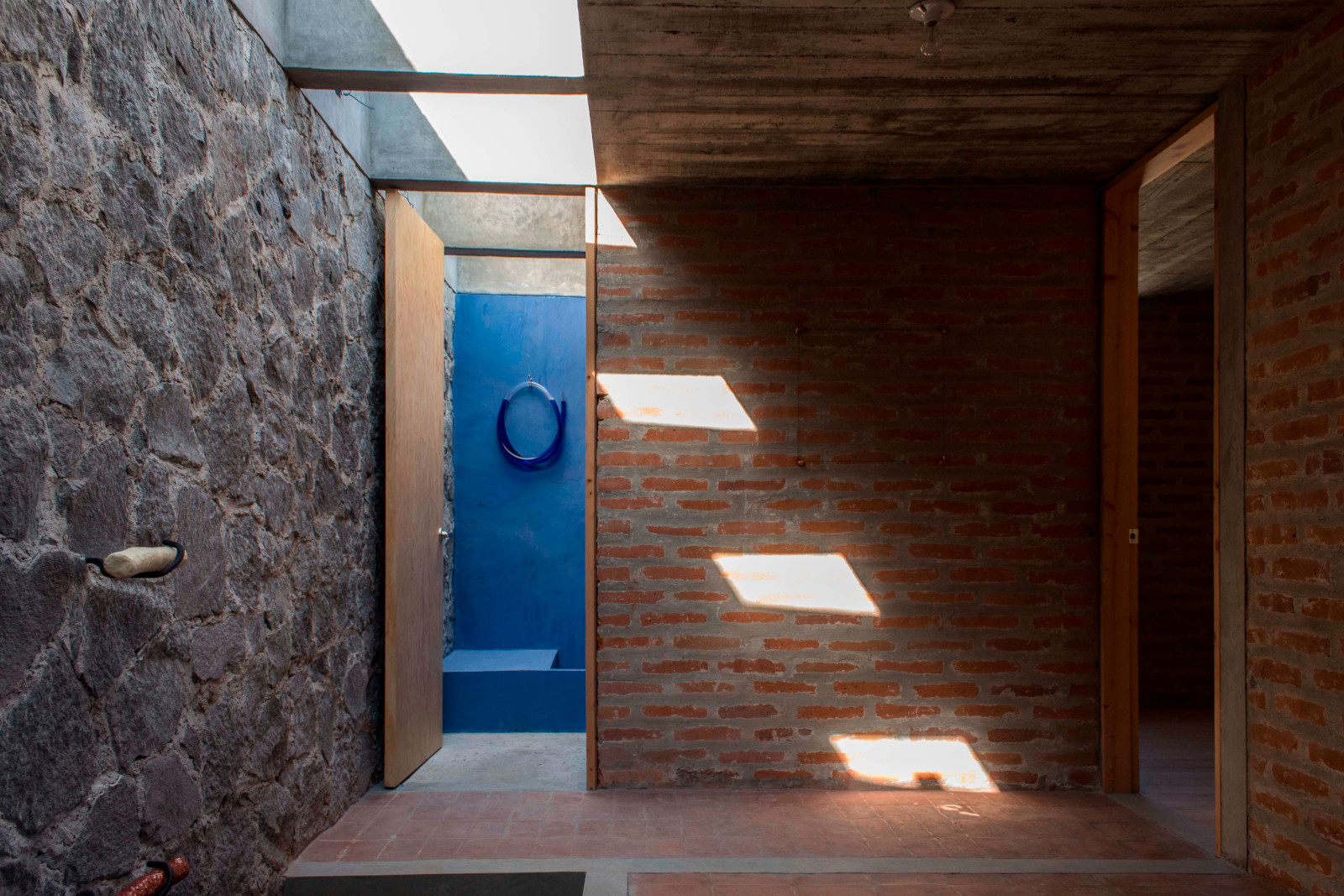
Gabriela Salazar
Knot Level
2012 – 2019, Vynil tube, found hook, tinted water, 55 x 48 x 21 cm
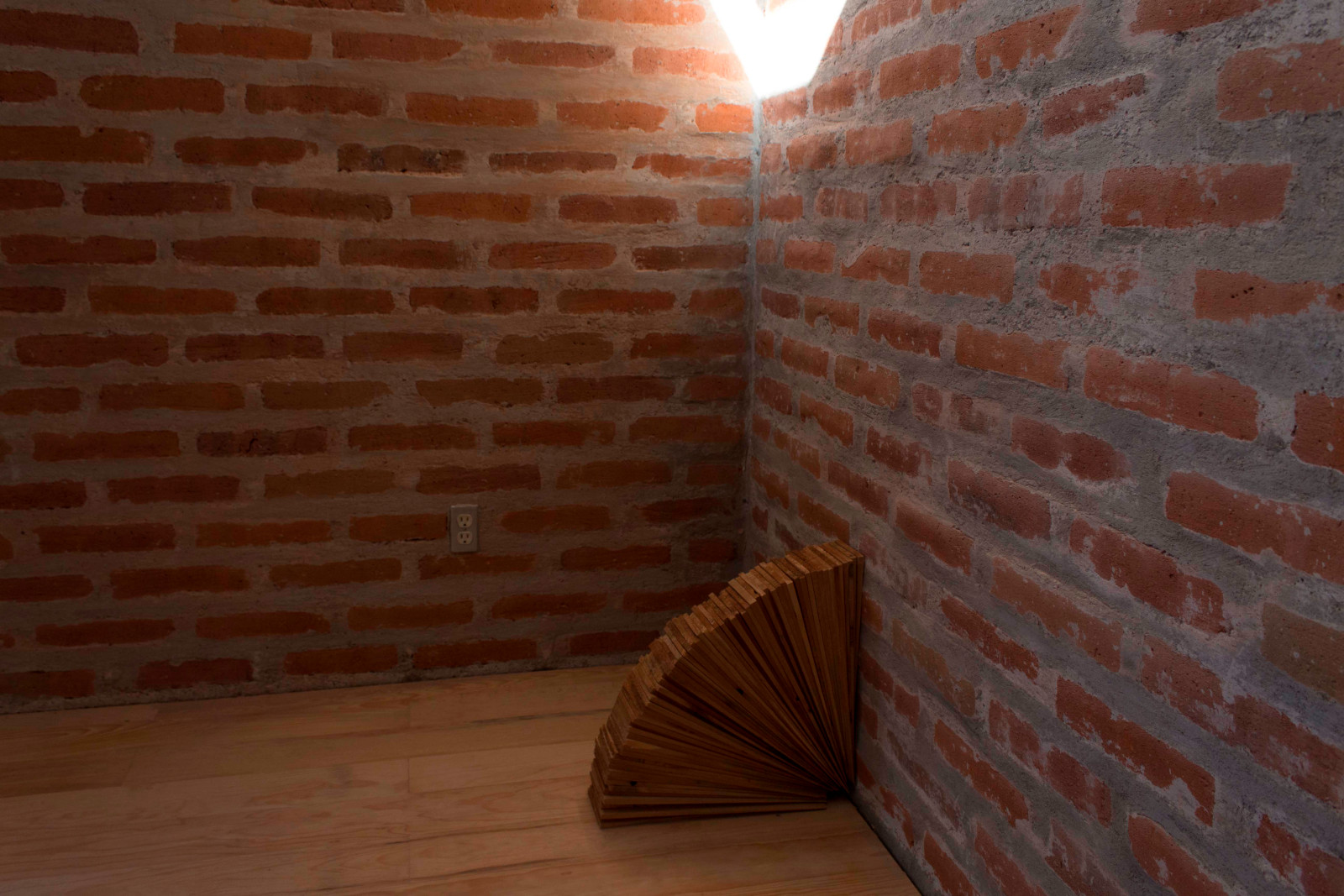
Gabriela Salazar
Wall Wedge
2012, Cedar shingles, existing wall and floor, 45 x 45 x 45 cm
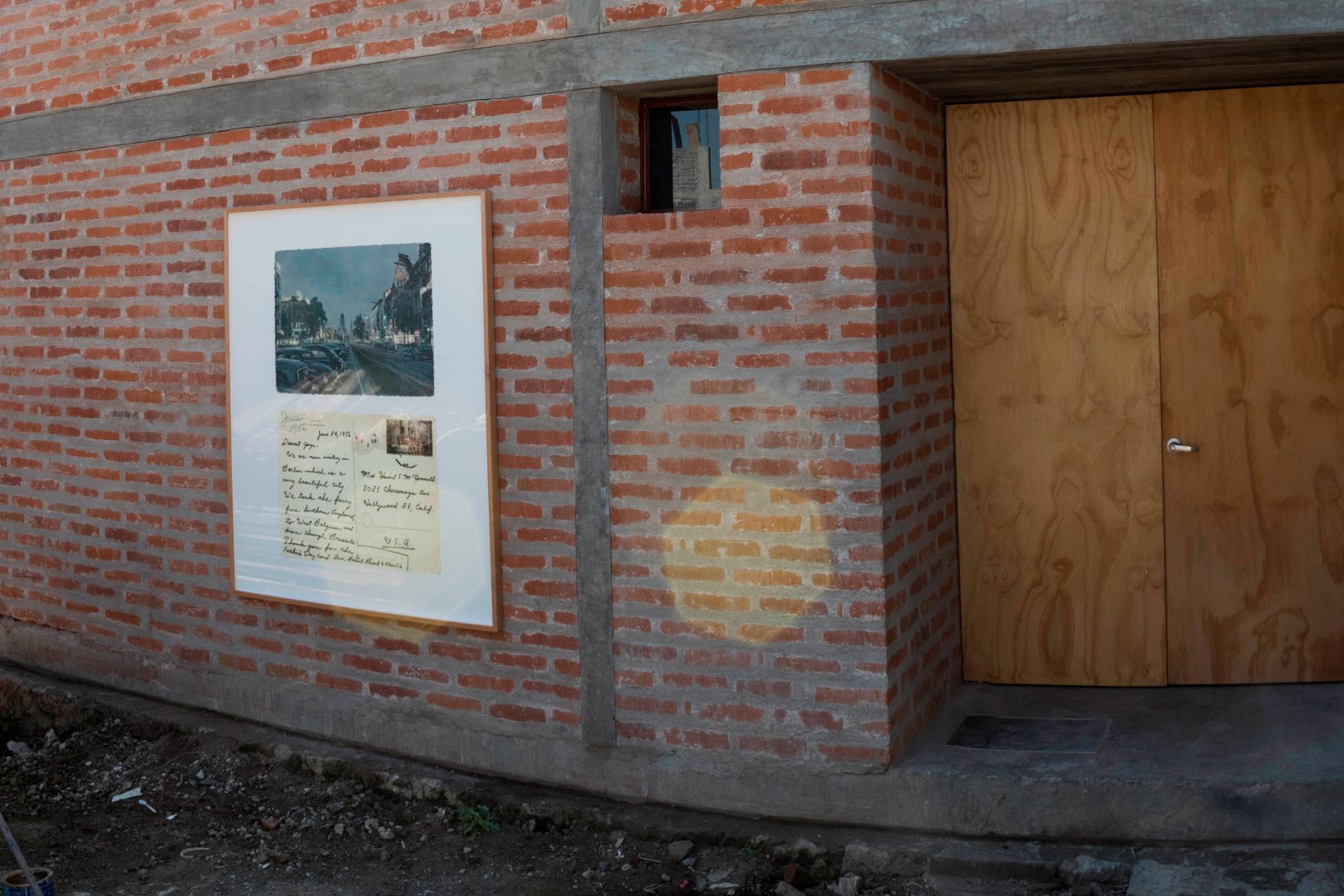
Gustavo Artigas
Berlin
2017, Ink injection on cotton paper 142 x 170 cm.
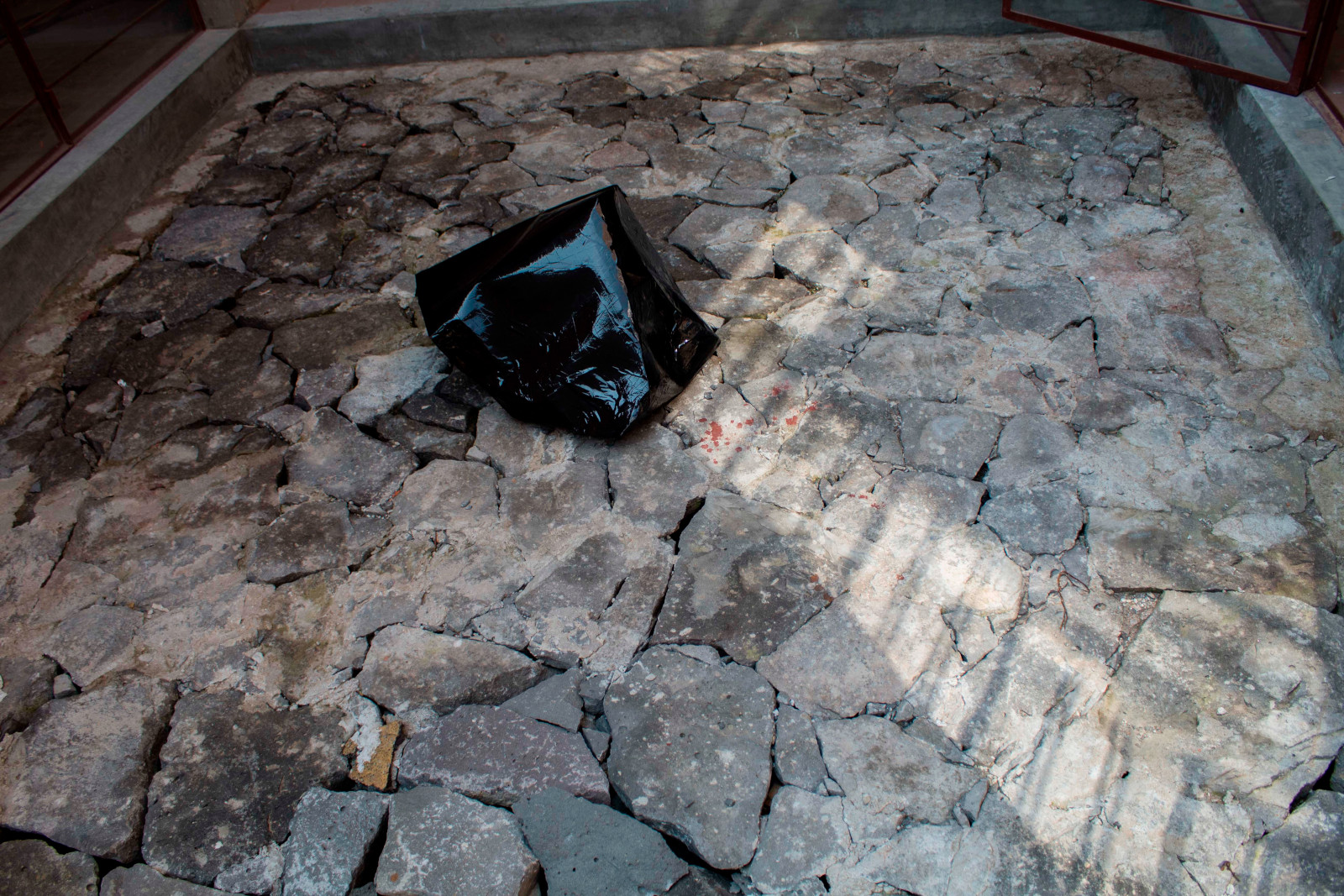
Manuela García
Obsidiana
2019, Paper sculpture, 40 x 45 x 50 cm
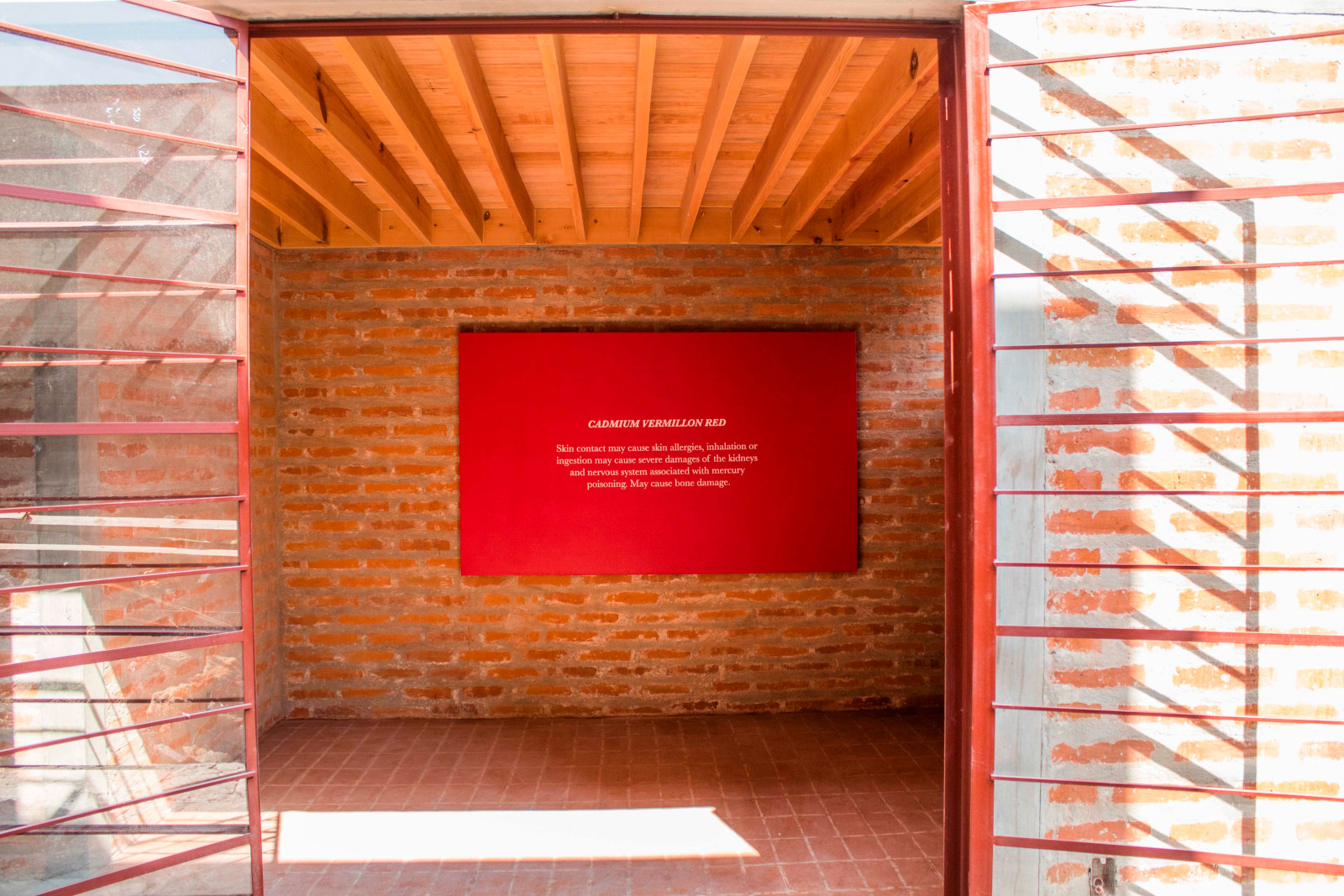
Gustavo Artigas
Cadmium Vermillion Red
Acrylic on canvas, 200 x 122 cm
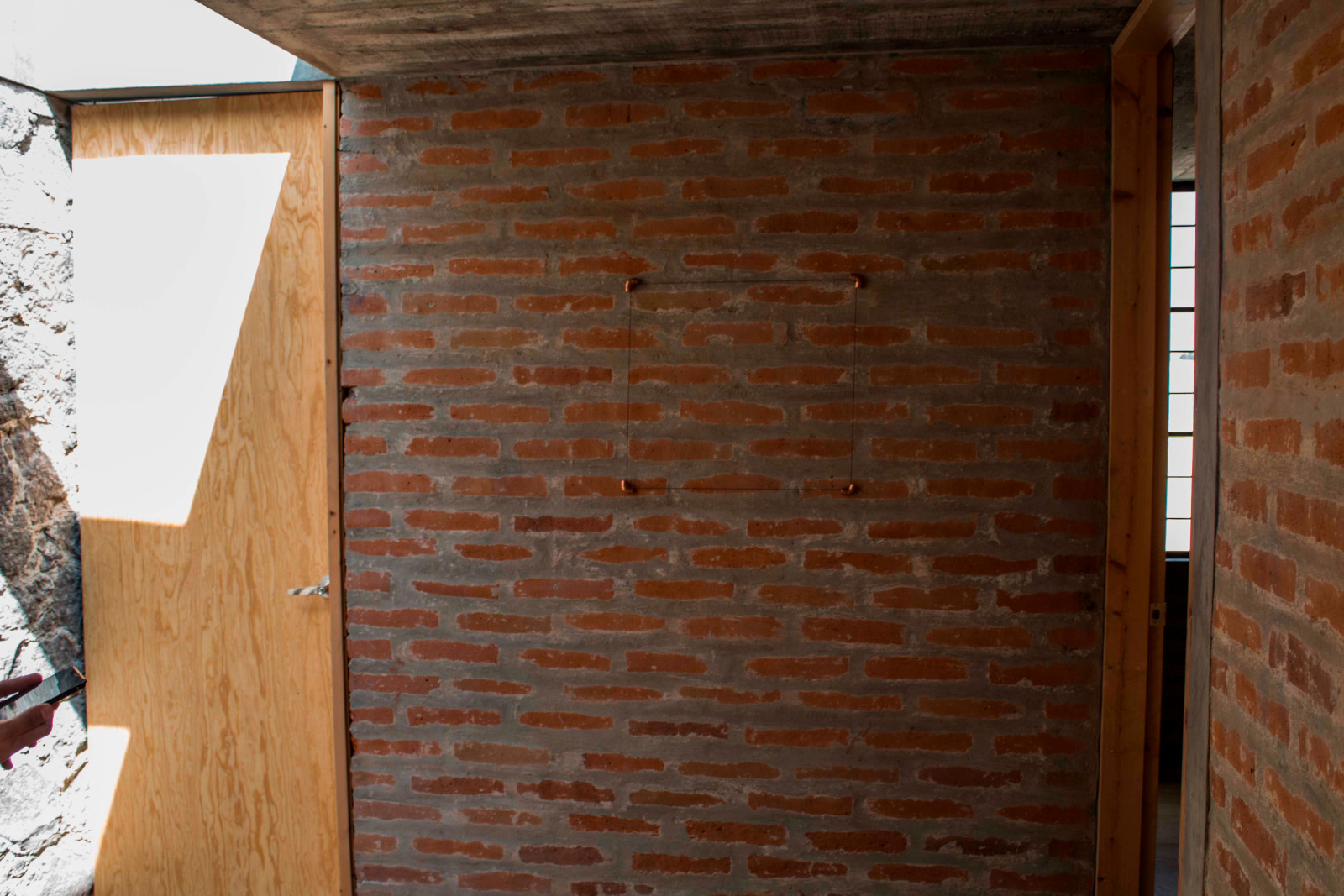
Manuela García
Circuito número 1
2017, thread, copper and nails, 200 x 200
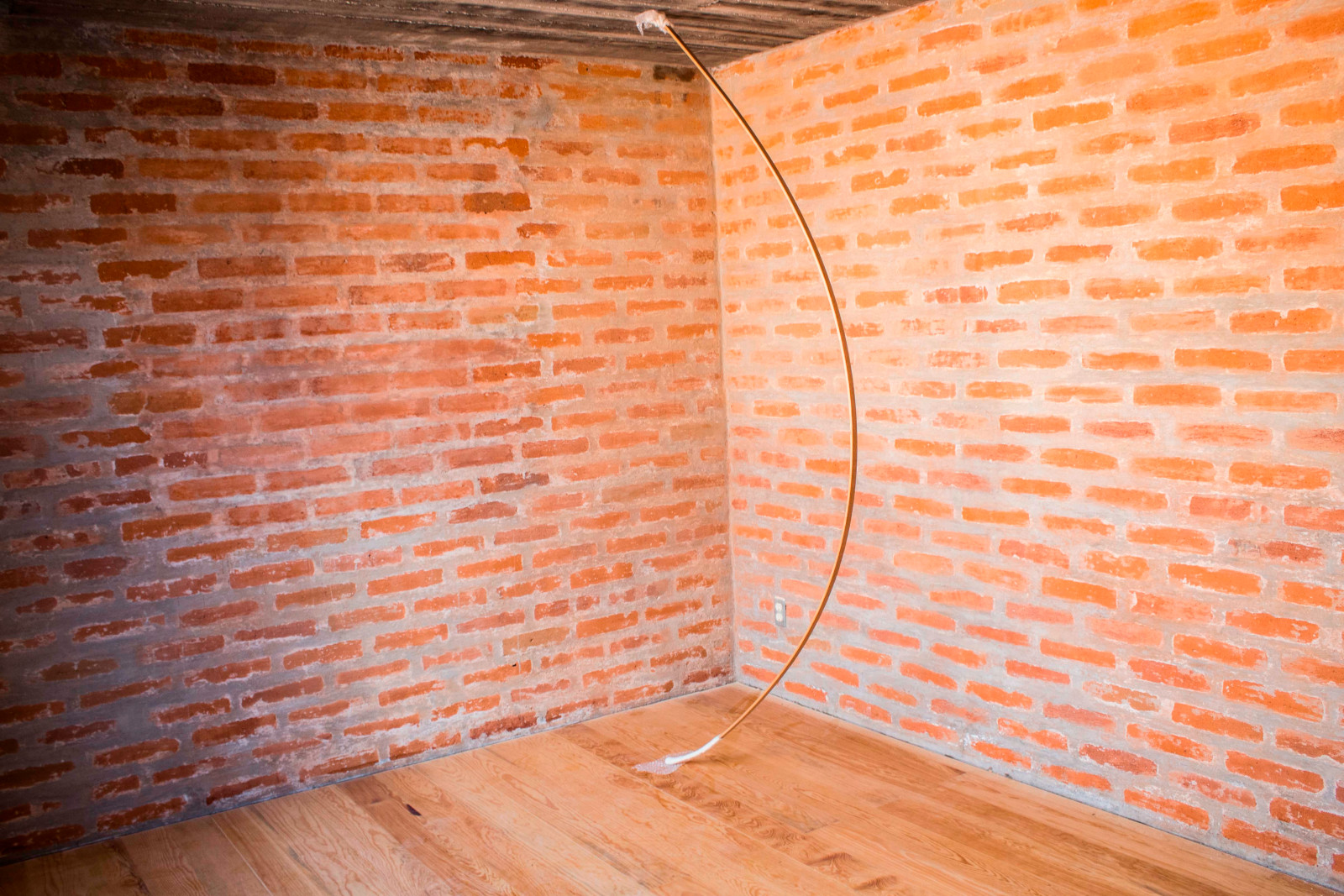
Manuela García
Arco
2019, Wood & wool
COLECCIONAR ES UN ACTO DE LOCURA
Regina de Con Cossio
Coleccionar es un acto de locura. Hace 26 años un hombre recolecta la pelusa de su ombligo mientras espera a que el agua del baño se caliente. Como el Arte se trata de la vida, encontramos…
IS THERE A DIGITAL PHOTOGRAPHY REVOLUTION?
Regina de Con Cossio
Photography brings memories, feelings, and ideas to life. We enjoy looking back on things that once happened in the past and digital photographs give us the ability to shorten that “past” exponentially.

